Where to View the Cherry Blossoms in Japan (Tokyo, Kyoto, and Osaka)
24 Feb. 2023
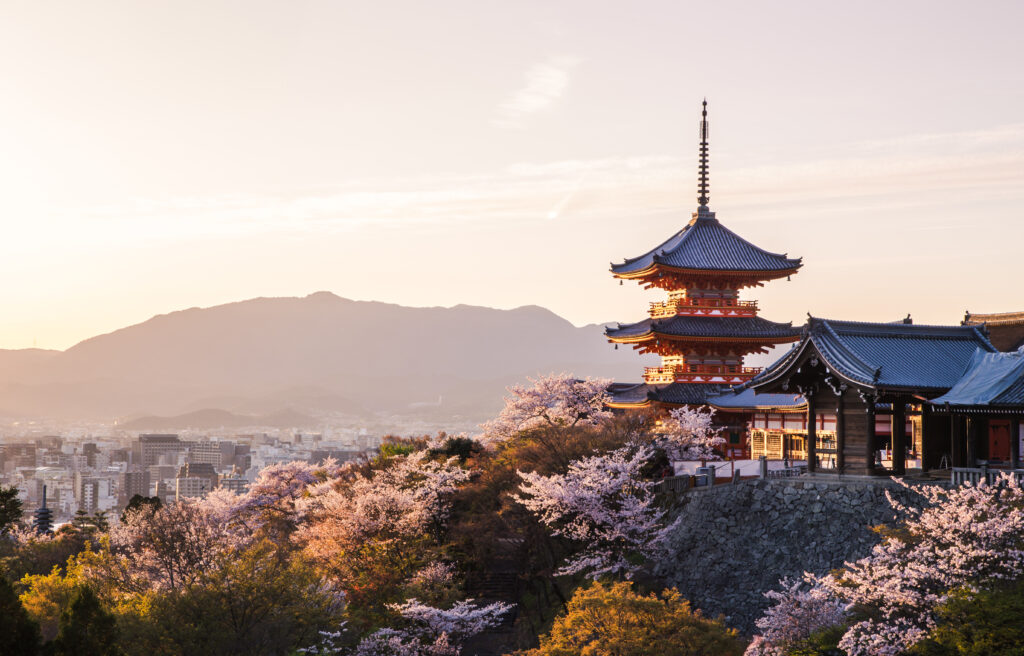
24 Feb. 2023

Sakura season, or Cherry blossom season, in Japan is a highly popular time of year, lasting from around March 22 to April 8. During this time, locals and visitors alike are drawn out of their homes or hotels to enjoy hanami, the Japanese tradition of flower and tree viewing.
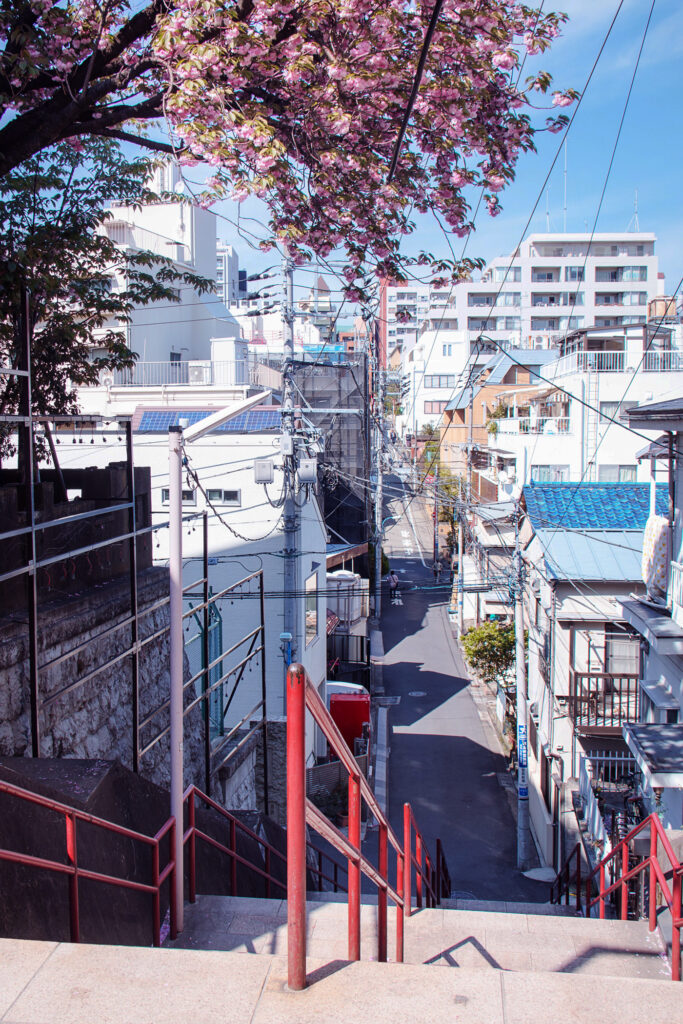
People often enjoy picnics and entertainment under the cherry trees in city parks. The trees, which do not produce fruit, are known for their beautiful white, pink, or red colors. There are 600 species. A flower weather forecast has even been established to predict when the blooming will start each year.
The tradition of the cherry blossom festival started in the 8th century and corresponds to the beginning of the rice planting period. Offerings were made at the foot of the Sakura trees to ensure that the harvest would be fruitful. The Kyoto imperial court took over this tradition by adding to it the tasting of sake among others traditions. In the 17th century, this tradition was extended to the whole country.
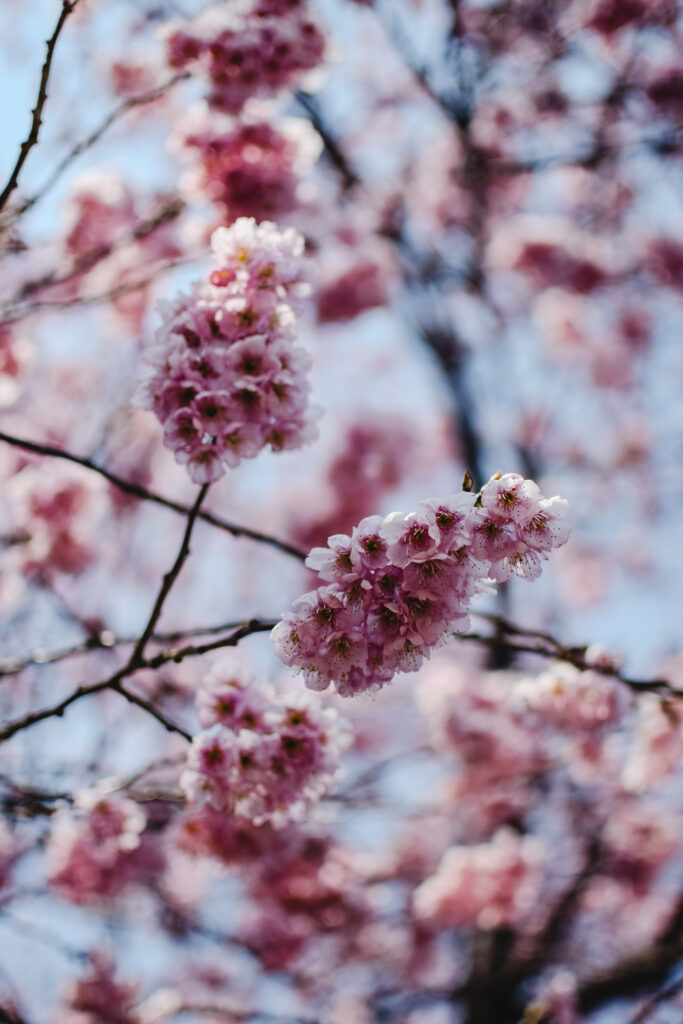
The cherry blossom is now the national flower of Japan, appearing on the currency and is a common metaphor for the beauty and transience of life. It is used to promote a national identity and unity, while furthering Japans cultural heritage.
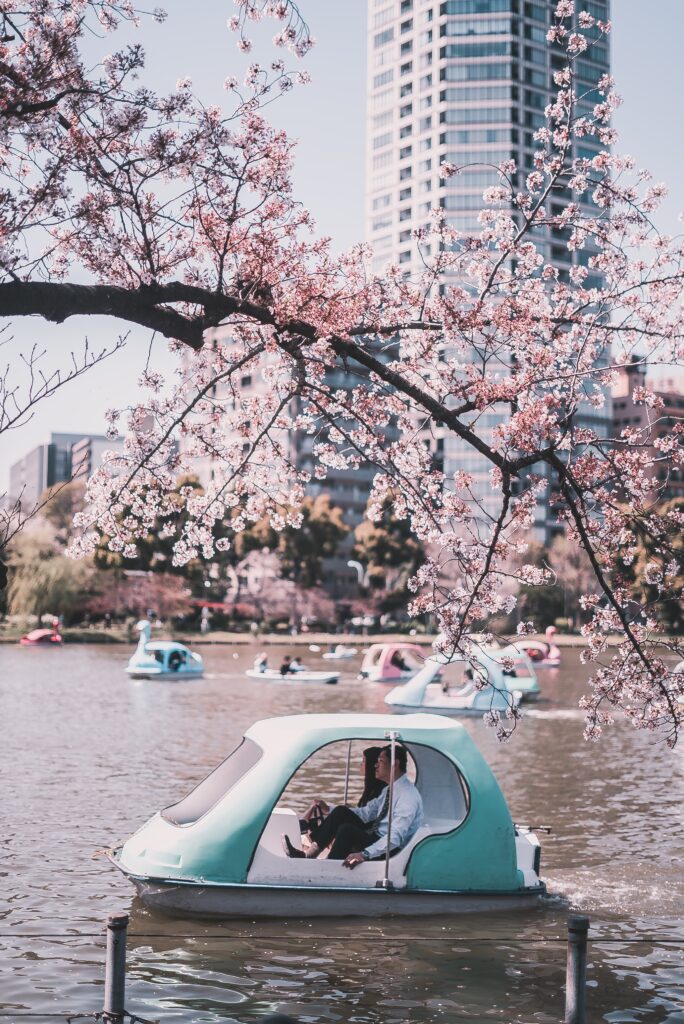
One of the popular spots in Tokyo to view the Cherry Blossoms is the Ueno Park. Located just 5 minutes from Ueno Station, the park is one of the first ever public parks in Japan, having once been the land owned by the Temple of Kan’ei-ji.The park has more than 8,800 trees, including 800 cherry trees of three varieties (Formosa cherry, Somei-Yoshino cherry and the iconic Japanese cherry).
For a romantic discovery of the cherry trees, boats and pedal boats allow you to admire them from the park’s pond. The park is also home to the Tokyo National Museum, the National Museum of Western Art and the Shitamachi Museum.
The Chidori-ga-fuchi moat is one of the most iconic and recognizable cherry blossom sites in Tokyo. It’s located on the northwest side of the Imperial Palace and boasts over 1000 cherry trees. To fully appreciate the beauty of the cherry blossoms here, it’s best to explore the area by boat, which allows you to cross under the canopy of delicate pink and white flowers.
The moat is particularly stunning at night, when it is backlit with colored lights that add an extra touch of magic to the experience. The soft glow of the lights illuminates the cherry blossoms, creating a dreamlike atmosphere that is truly unforgettable. A nighttime boat ride through the Chidori-ga-fuchi moat during cherry blossom season is an experience that should not be missed.
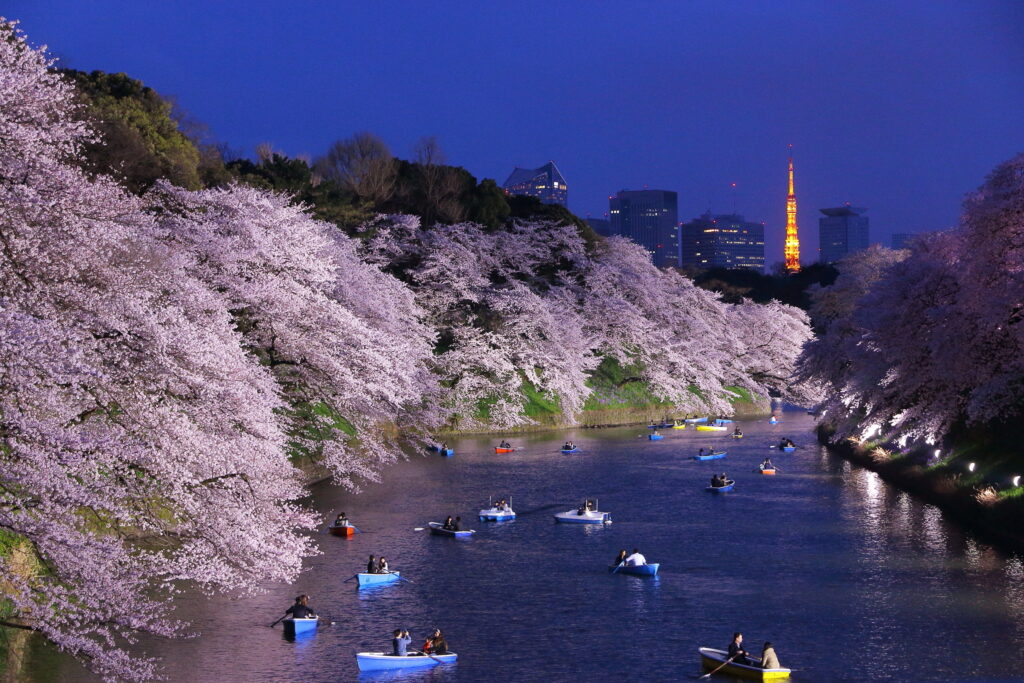
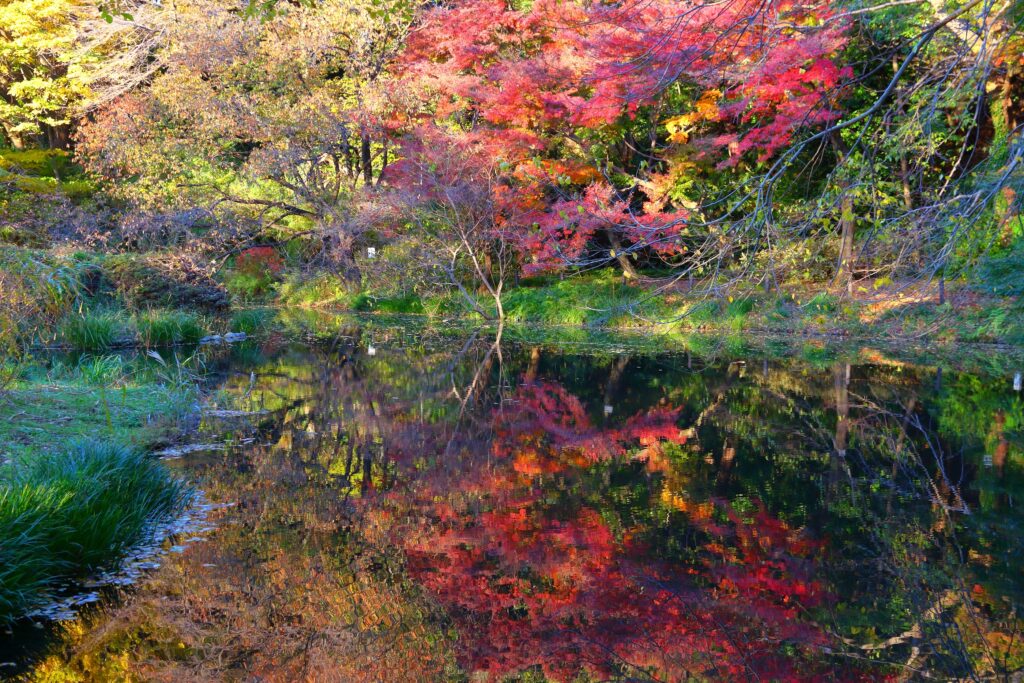
Spanning over 40 acres, the Koishikawa Botanical Gardens offer a variety of landscapes, vistas and paths for visitors to enjoy the cherry blossoms. The Botanical Gardens originally started as the Koishikawa Medicinal Herb Garden in 1684, and is still home to many historic plants.
A place where Tokyoites can relax, the park is adorned with beautiful flowers and has dedicated picnic areas for lunch under the canopy of pink petals. Many artists such as martial artists, musicians, cosplayers and comedians perform here.
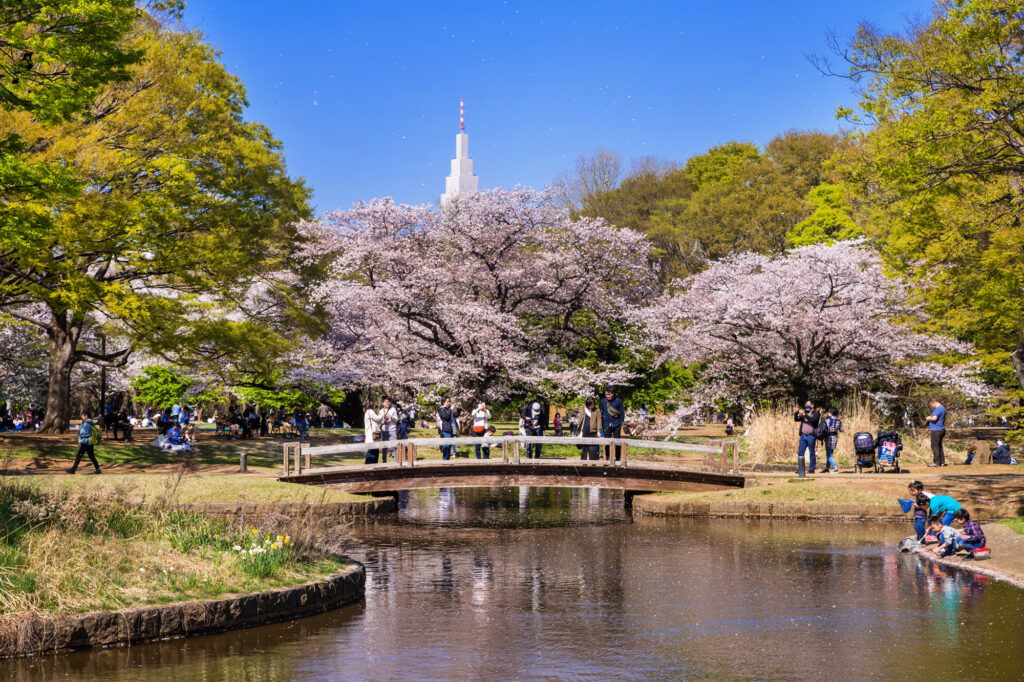
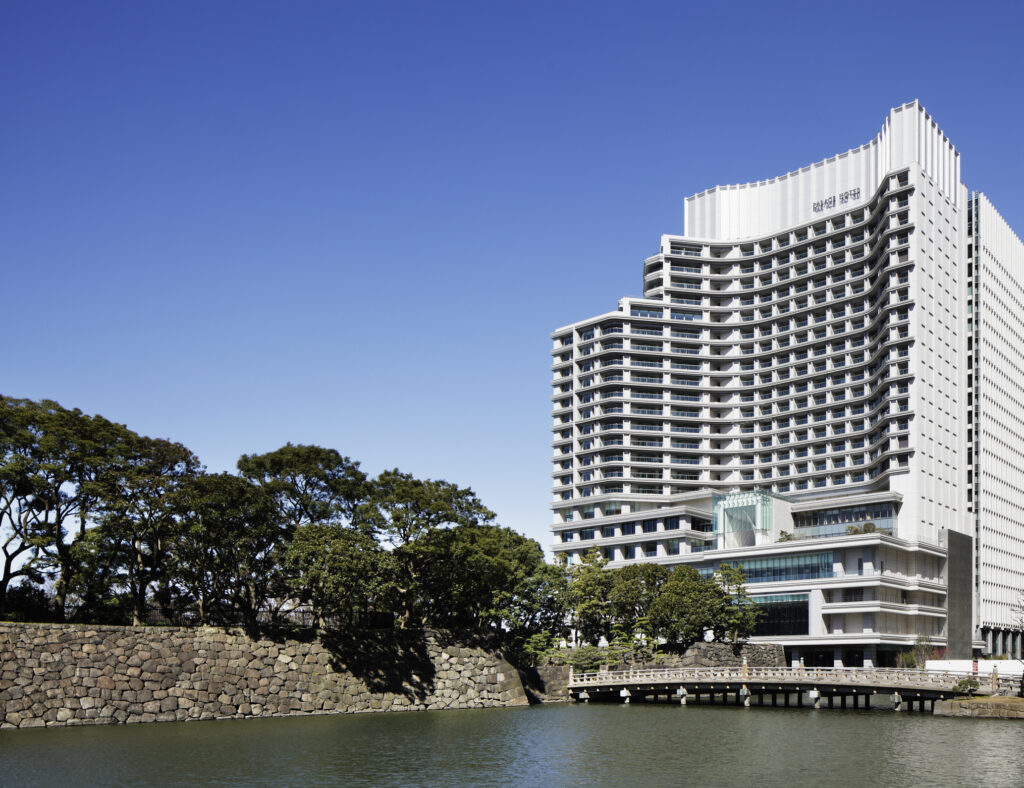
The Palace Hotel Tokyo is located in the heart of Tokyo and is a hotel of contrast. While its architecture and contemporary interiors blend into the modernity of the city, its exceptional location facing the Imperial Palace Gardens makes it almost an enclave of the city’s largest park.
It offers an unobstructed and sublime view of the most beautiful green setting in Tokyo, an invitation to contemplation.
Its 290 rooms and suites are the epitome of urban aesthetics, with clean lines and contemporary furnishings in contrasting tones of stone and wood. However, the greenery that surrounds the hotel’s common areas, such as the Club Lounge and gardens, is a reminder of Japan’s deep love of nature and its soothing qualities.
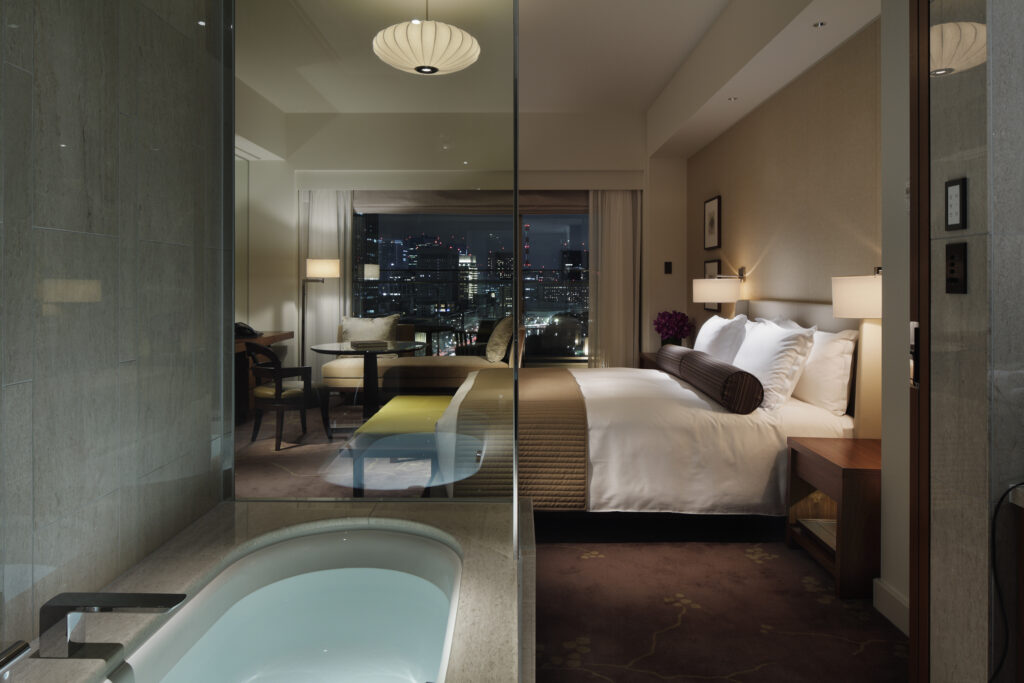
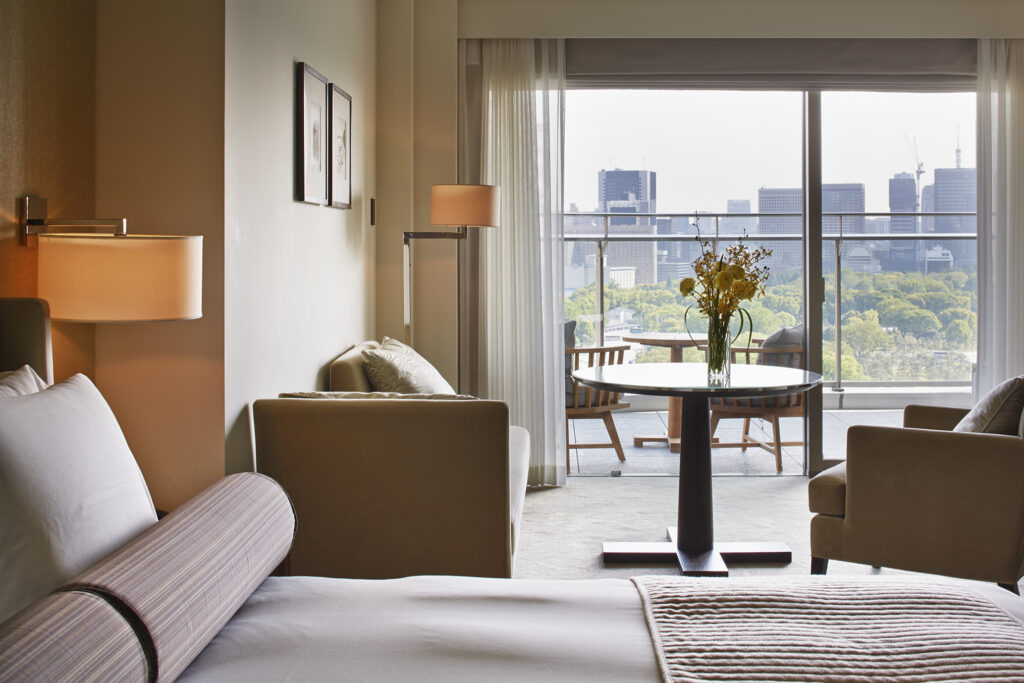
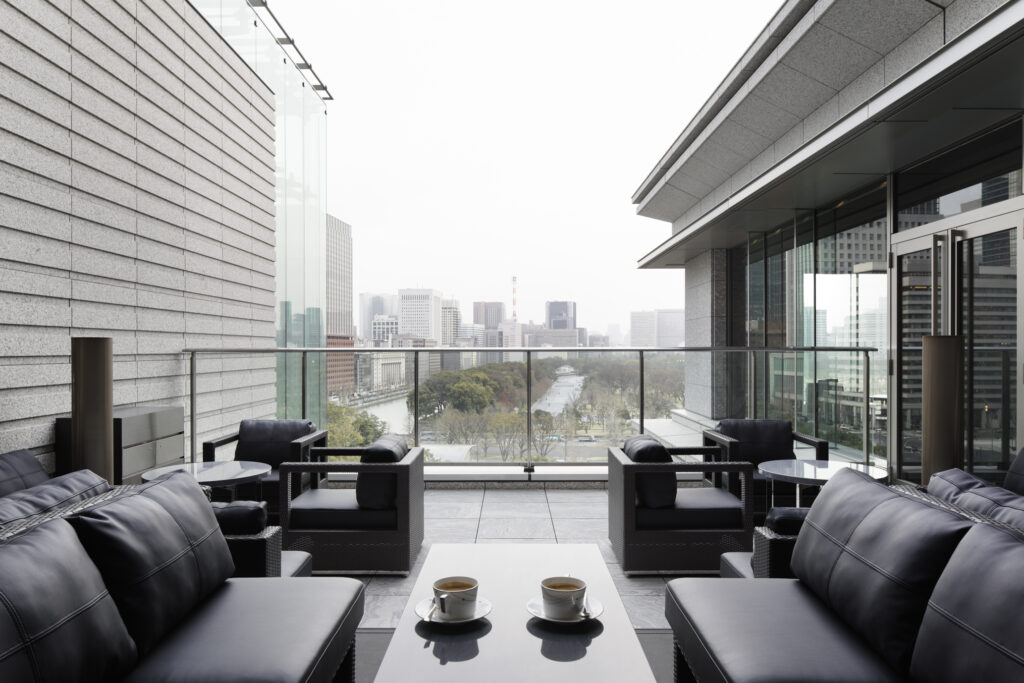
In addition, the Palace Hotel Tokyo celebrates Japanese culture through its culinary offerings, which feature a wide variety of cuisines and atmospheres in the hotel’s seven restaurants. Wadakura, the hotel’s gourmet restaurant named after the eponymous moat, serves specialties in four different areas: tempura at Tatsumi (an intimate six-seat bar), teppanyaki at GO, sushi at Sushi Kanesaka and kaiseki in the main dining room.
The hotel also features Esterre, a fine dining French restaurant, and Sushi Kanesaka, an exquisite sushi experience by Michelin-starred chef Shinji Kanesaka. Among the hotel’s 3 bars, the Private Lounge Bar, located on the 6th floor, offers a breathtaking view of the Imperial Palace gardens in the morning and an equally magnificent view of the Tokyo skyline in the evening, all in an intimate setting of dark velvet and mood lighting.
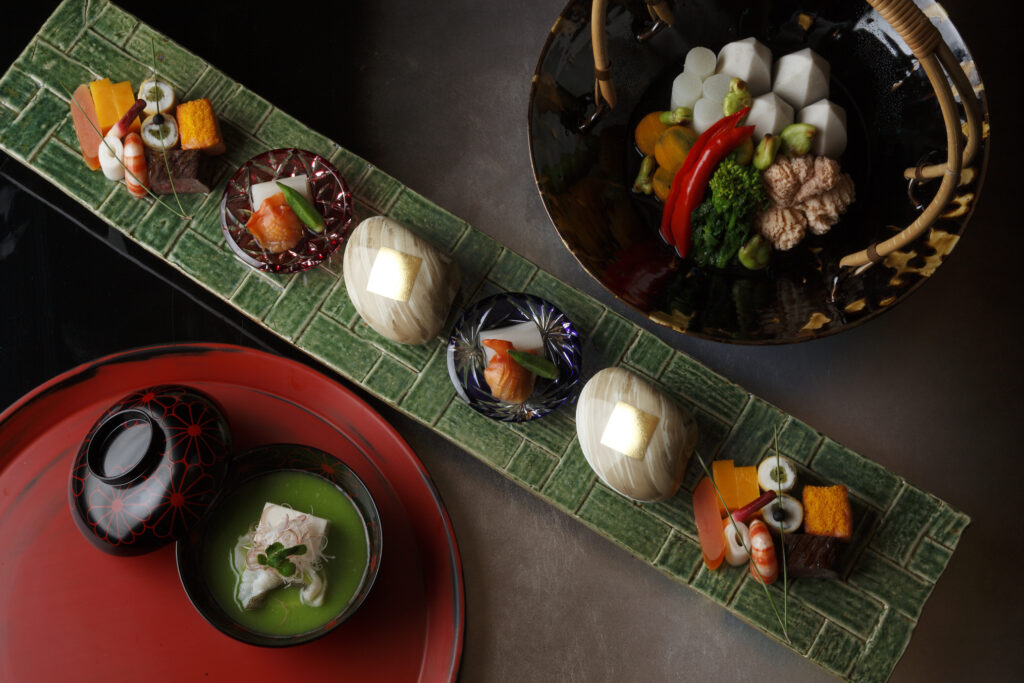
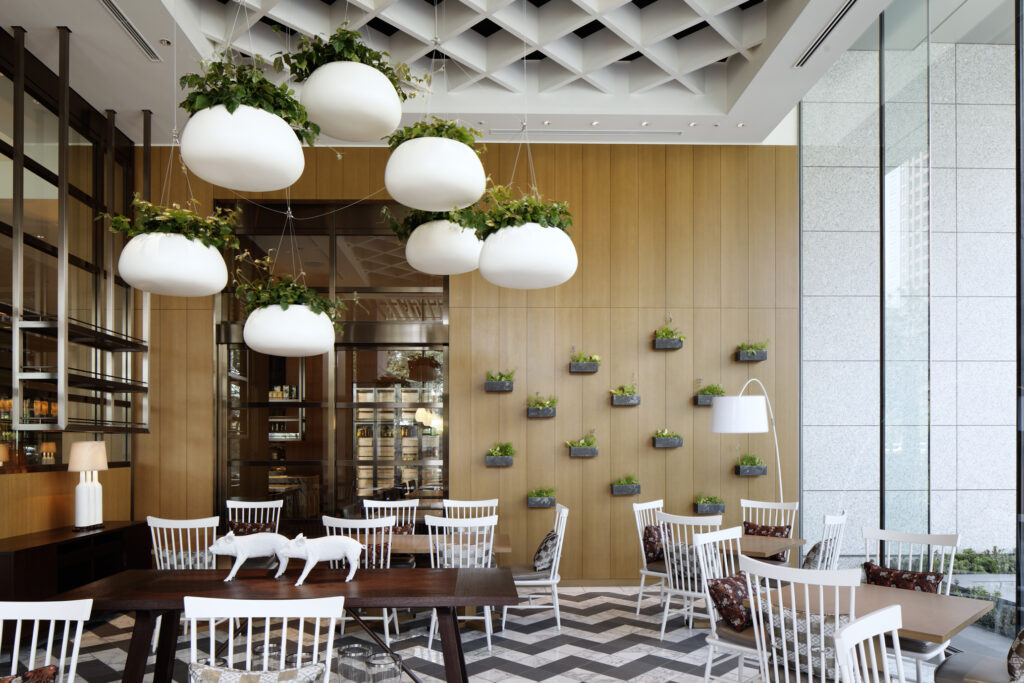
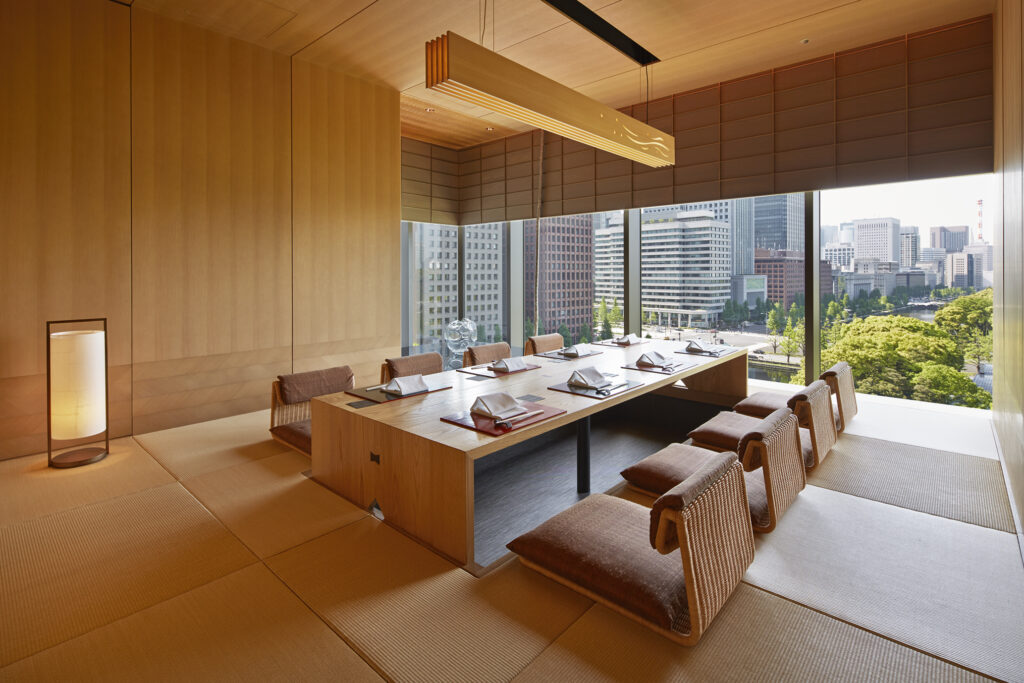
The Palace Hotel Tokyo completes its offer with a 1200 square meter Evian spa. Here you can enjoy a wide range of massages and beauty treatments with Omnisens and Anne Semonin products, as well as an indoor pool and fitness center.
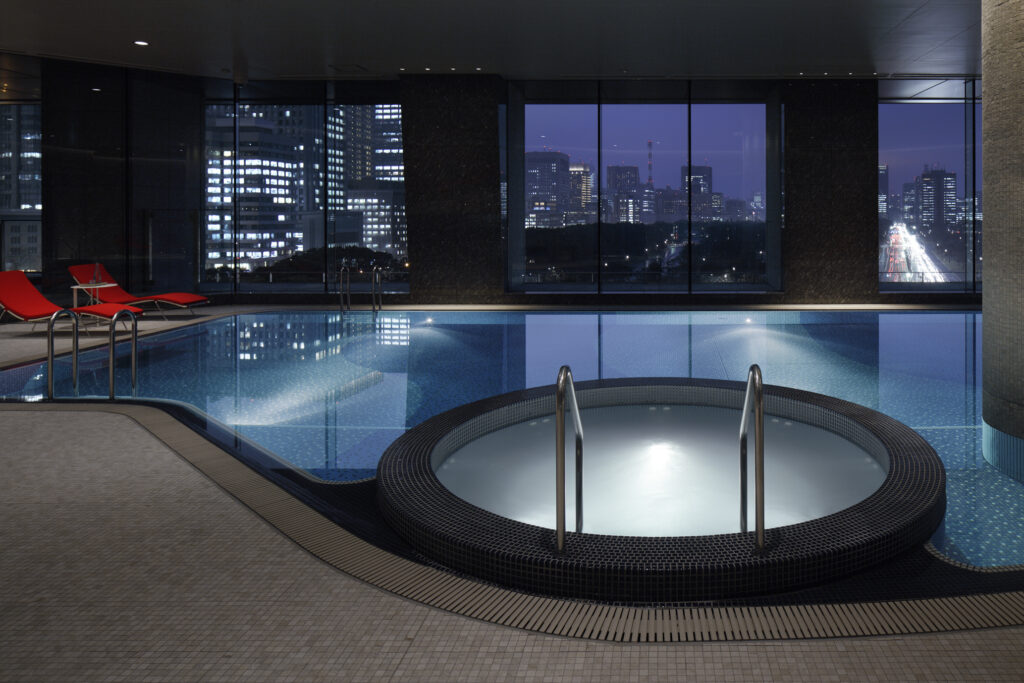
Address: 1-1-1 Marunouchi Chiyodaku, Tokyo
Transfer: 20 minutes from Haneda Airport
Opening period: All year
Just behind the Palace Hotel Tokyo, the Aman Tokyo is an ode to the city of Tokyo and its modernity on the one hand, and to Japanese philosophy and aesthetics on the other.
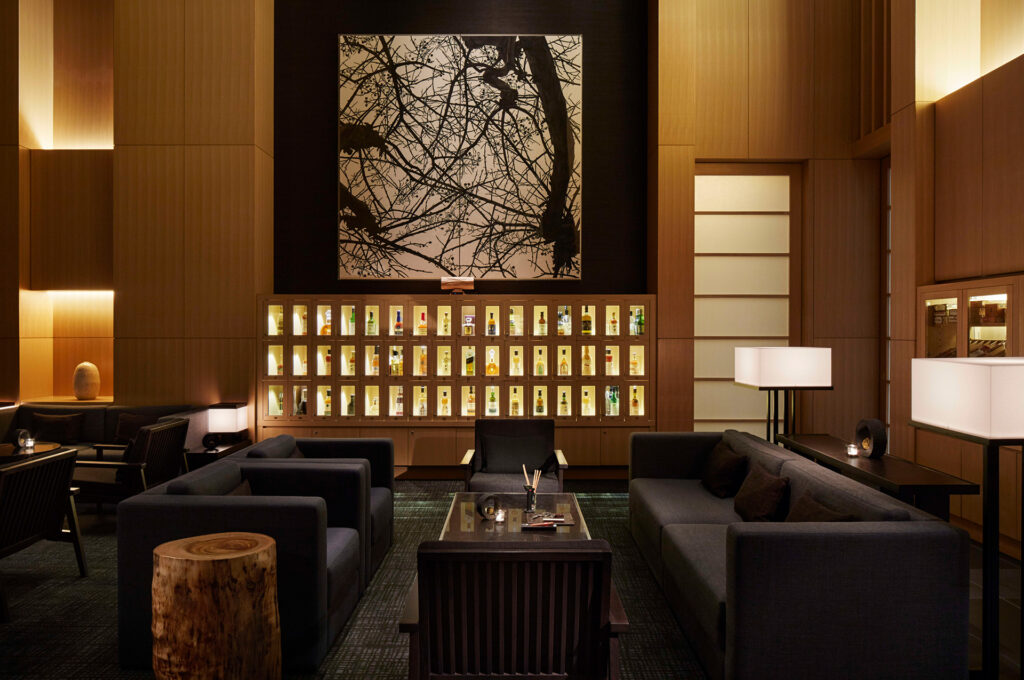
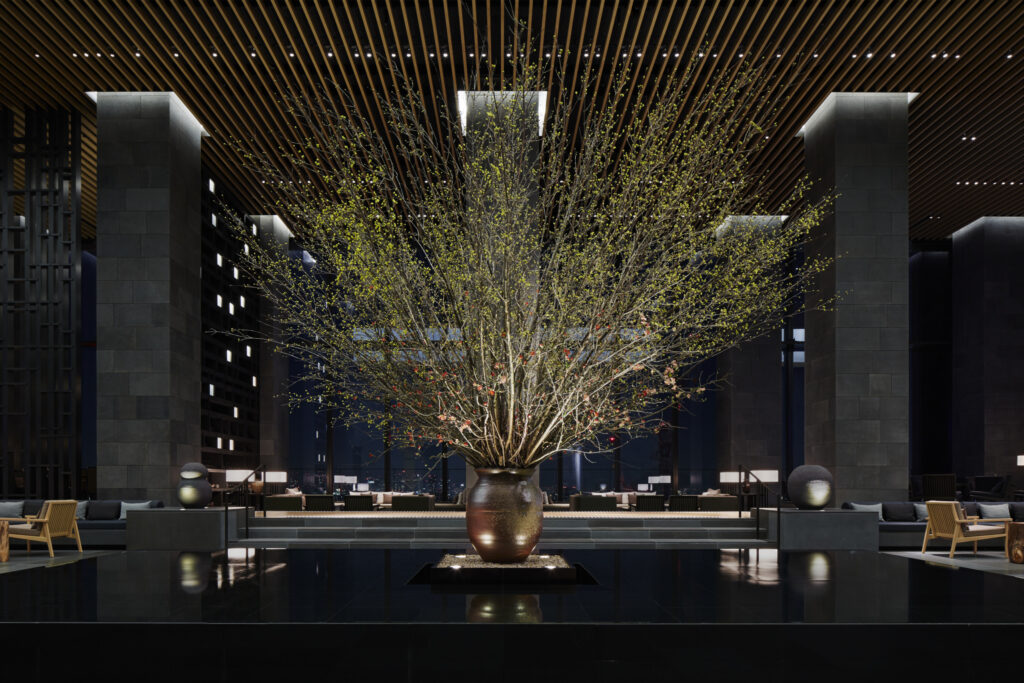
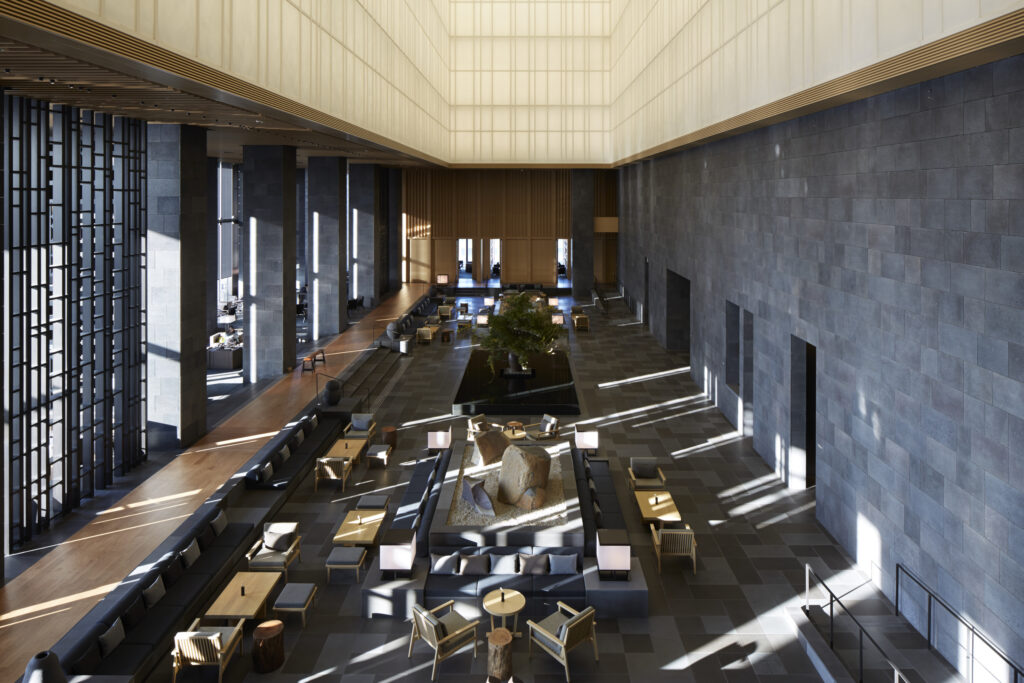
Located in the Otemachi Tower, the Aman Tokyo is one of the few properties in the brand’s portfolio to be located in the middle of an urban environment. However, occupying only the top six floors of the 38-storey building, the hotel offers an unparalleled, aerial view away from the hustle and bustle of the city.
Behind the tower’s impressive blue glass façade, Aman Tokyo welcomes guests to interiors that blend traditional Japanese elements, such as a ikebana (traditional Japanese flower arrangement) in the vast lobby, washi paper doors and even engawa platforms (floor strips hanging next to windows or shutters).
Inside, the almost monochrome palette of grey stone and wood is enhanced by clean, geometric lines, from the furniture to the marble in the bathrooms. But what is pleasing is that the minimalism of the interior does not turn into cold austerity.
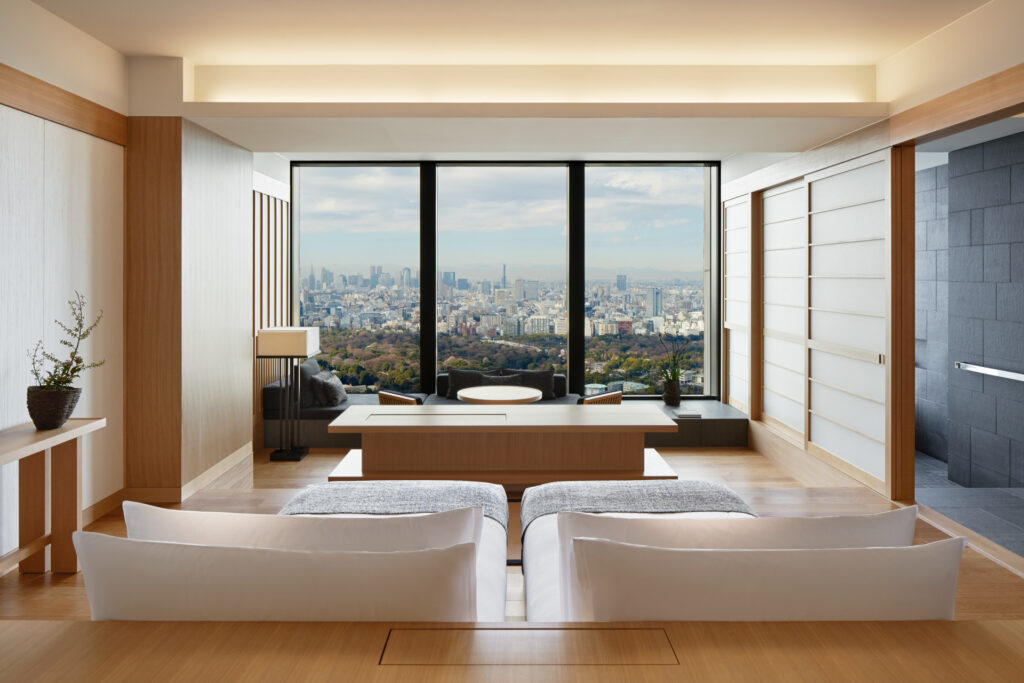
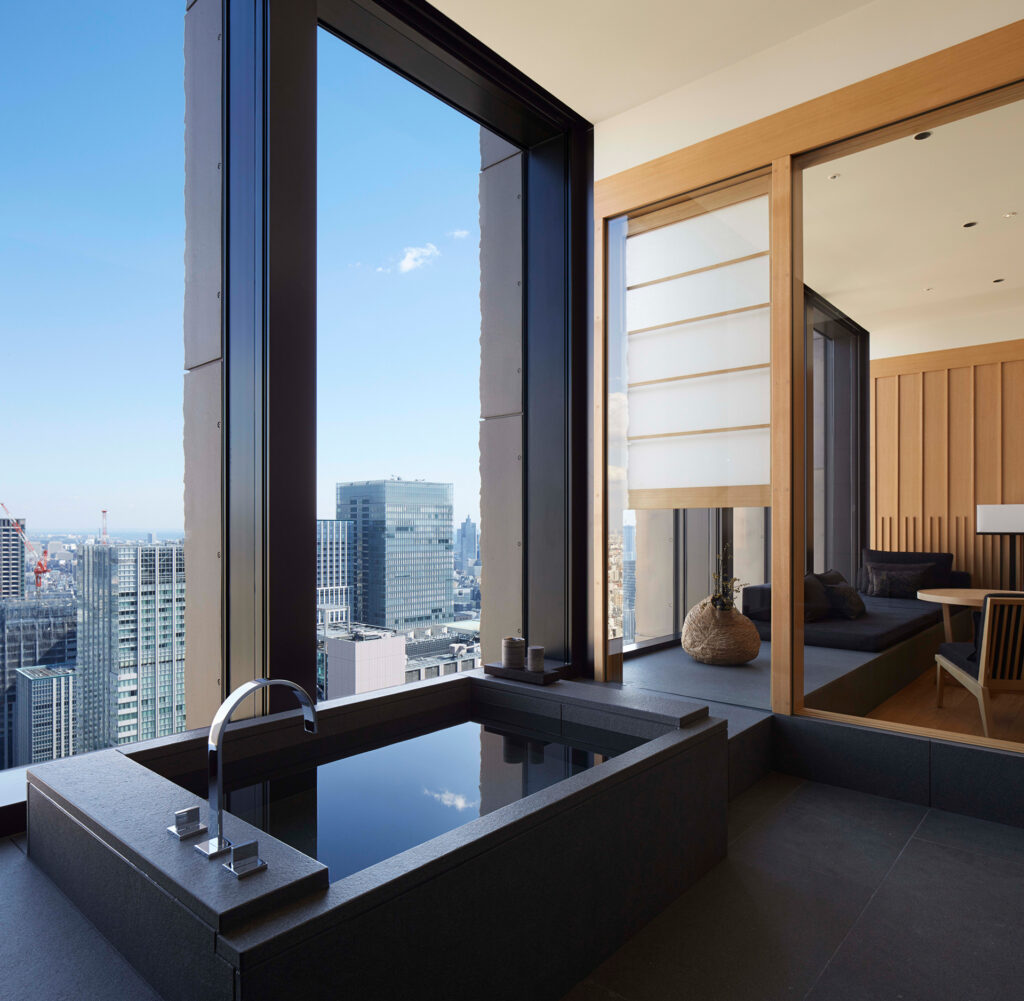
Five outlets make up the culinary offering at Aman Tokyo. Headlining the menu is Arva, which explores the flavors of southern Italy with a menu created by Venice-trained chef Masakazy Hiraki. Musashi, meanwhile, offers a traditional omakase designed by master chef Musashi (a chef’s surprise menu, a practice rooted in Japanese culture).
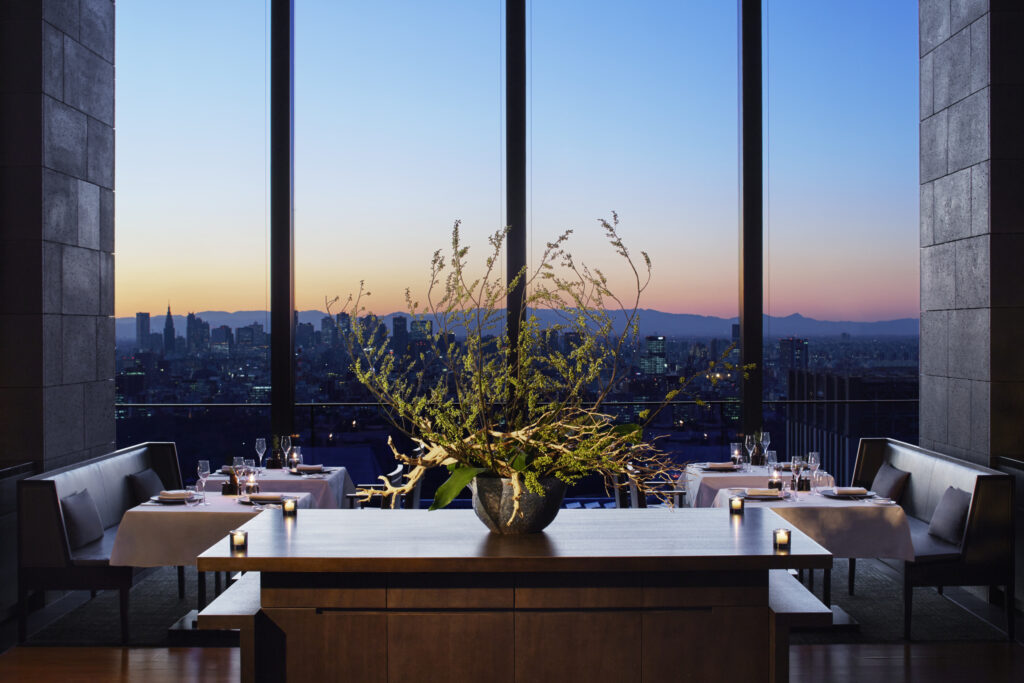
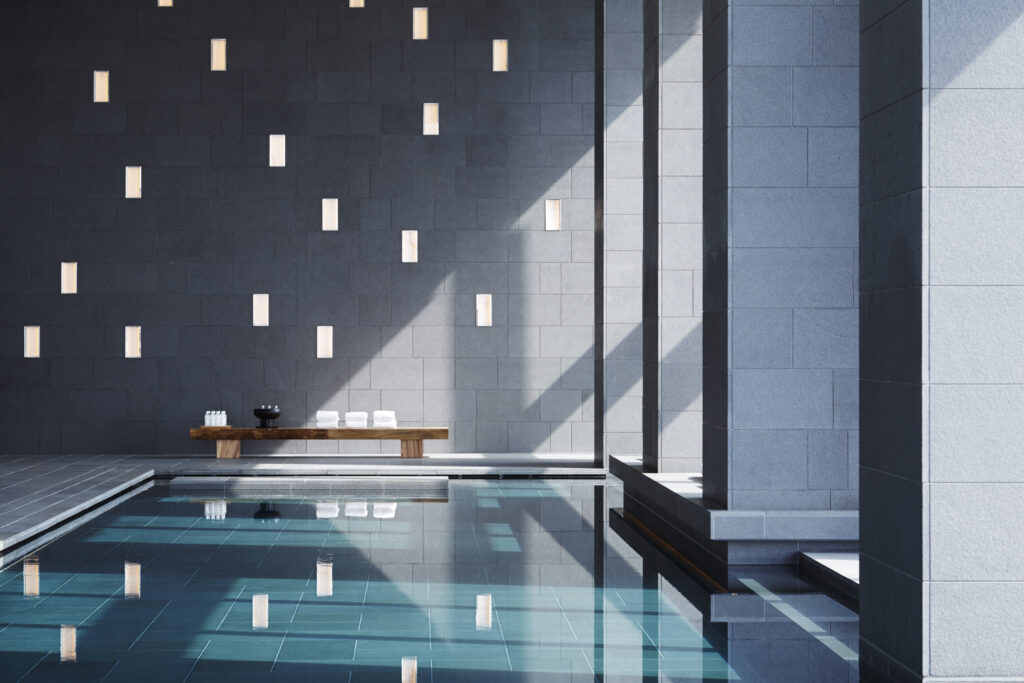
The Aman Spa completes the hotel’s offering with onsen style hot tubs, steam baths, a 30-metre swimming pool, as well as a fitness studio with state-of-the-art equipment and yoga and Pilates classes.
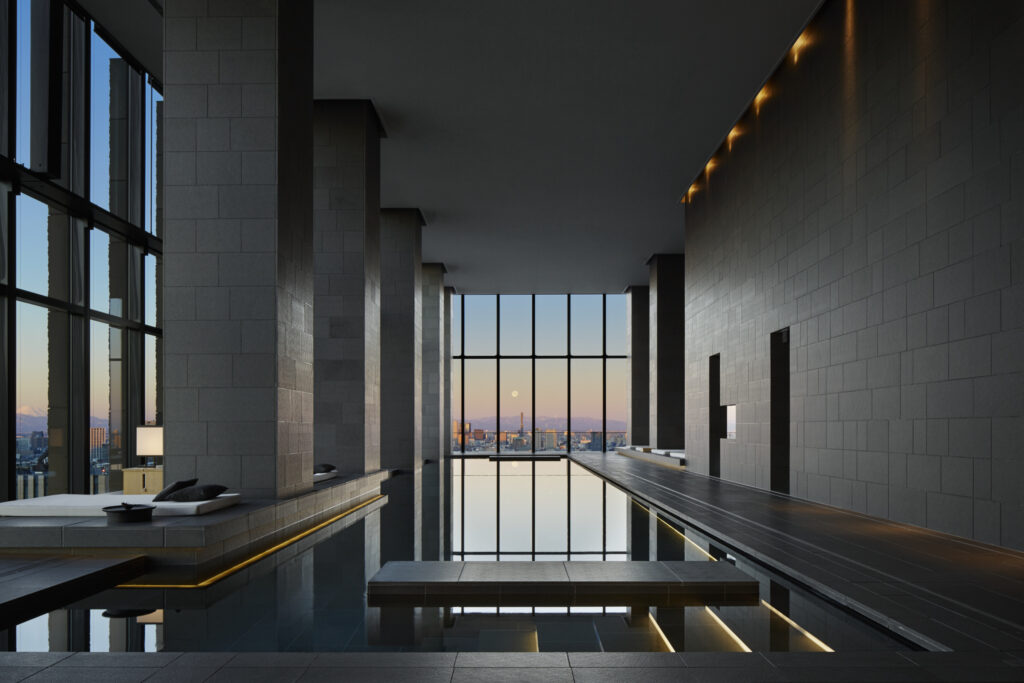
Address: The Otemachi Tower, 1-5-6 Otemachi, Chiyoda-ku, Tokyo
Transfer: 20 minutes from Haneda Airport
Opening period: All year
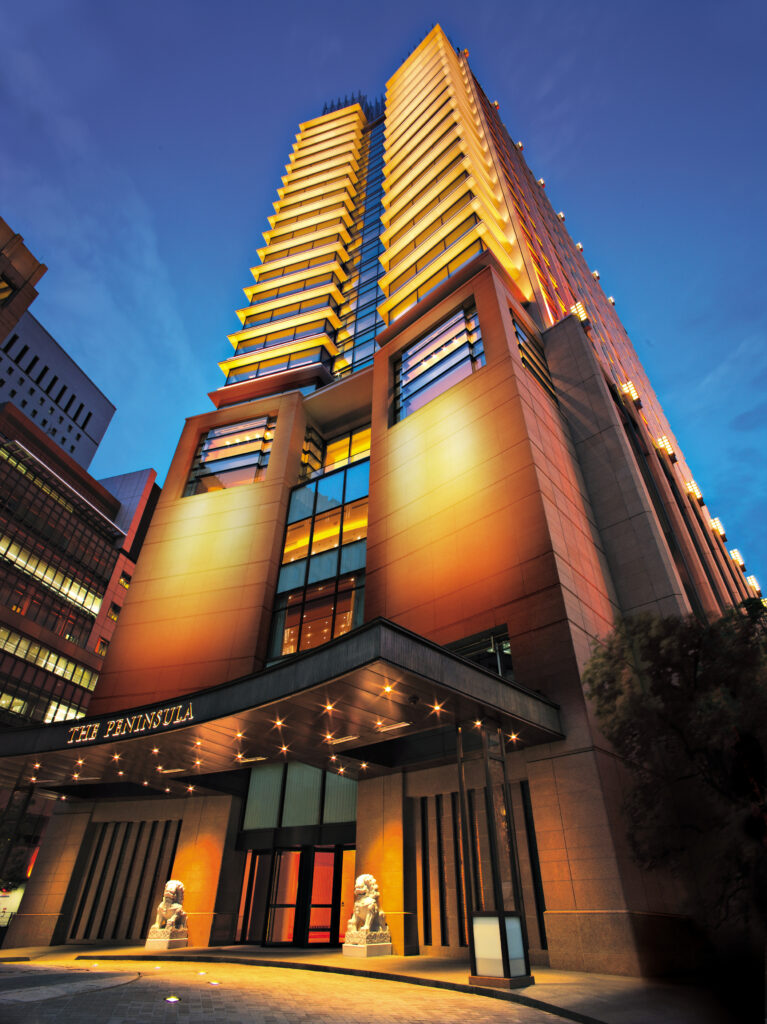
Surrounded by the luxury shops of Ginza and Marunouchi, overlooking Hibiya Park and the Imperial Gardens, The Peninsula Tokyo is in line with the brand’s emphasis on pomp and tradition.
Designed by architect Kazukiyo Sato, the 24-storey building evokes a traditional Japanese lantern. Its grand lobby is imposing with high ceilings, massive columns and a crystal chandelier that seems to float like a cloud over the room. Its 314 guest rooms are contemporary in style with Japanese influences.
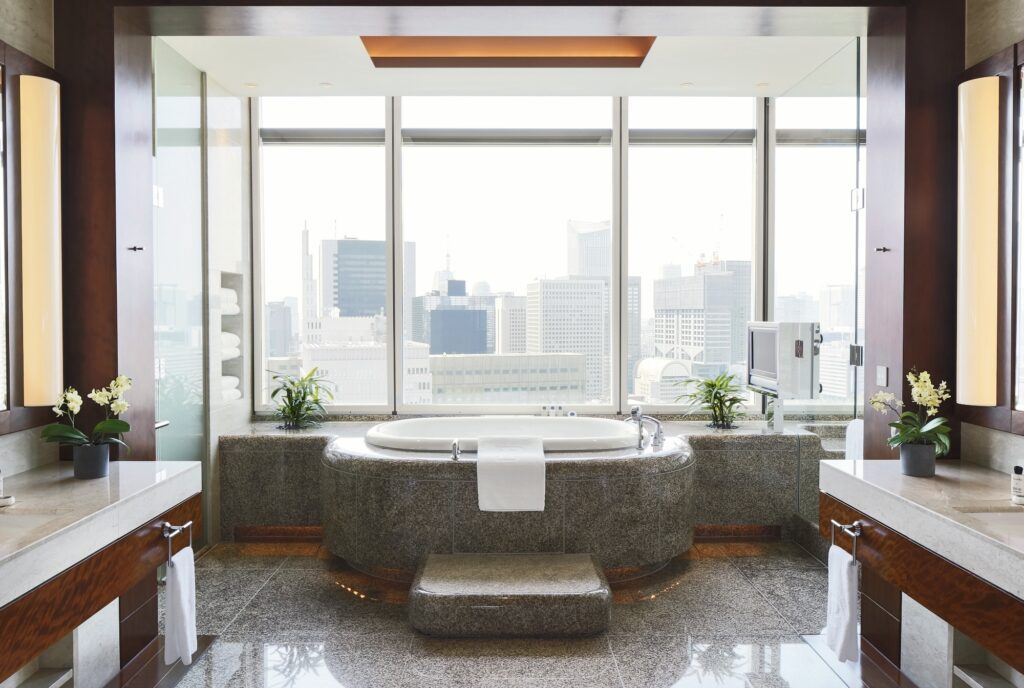
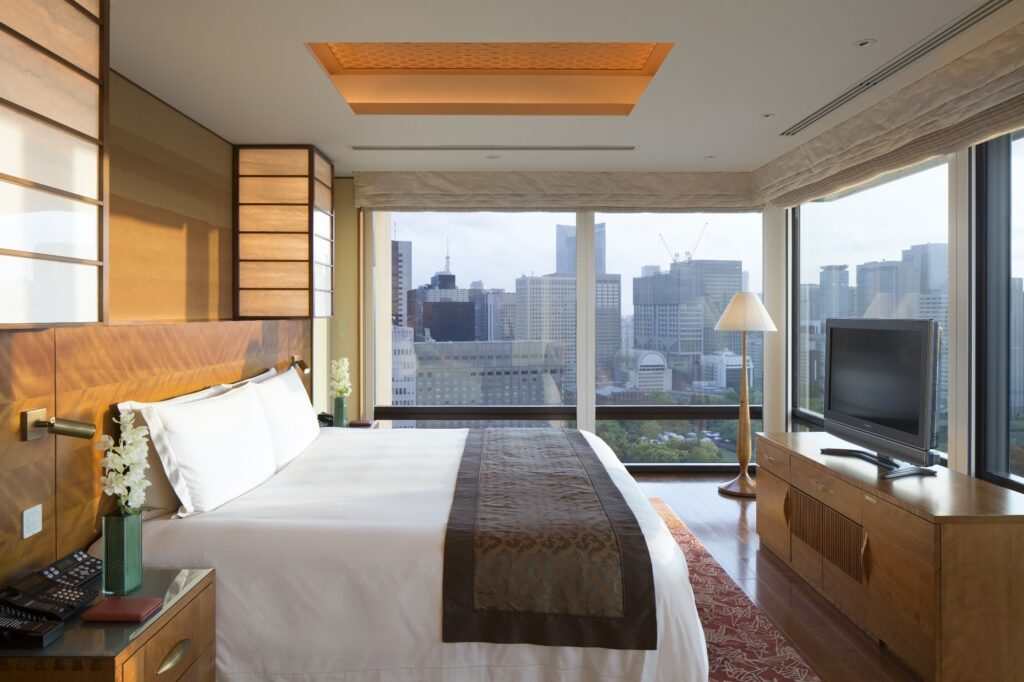
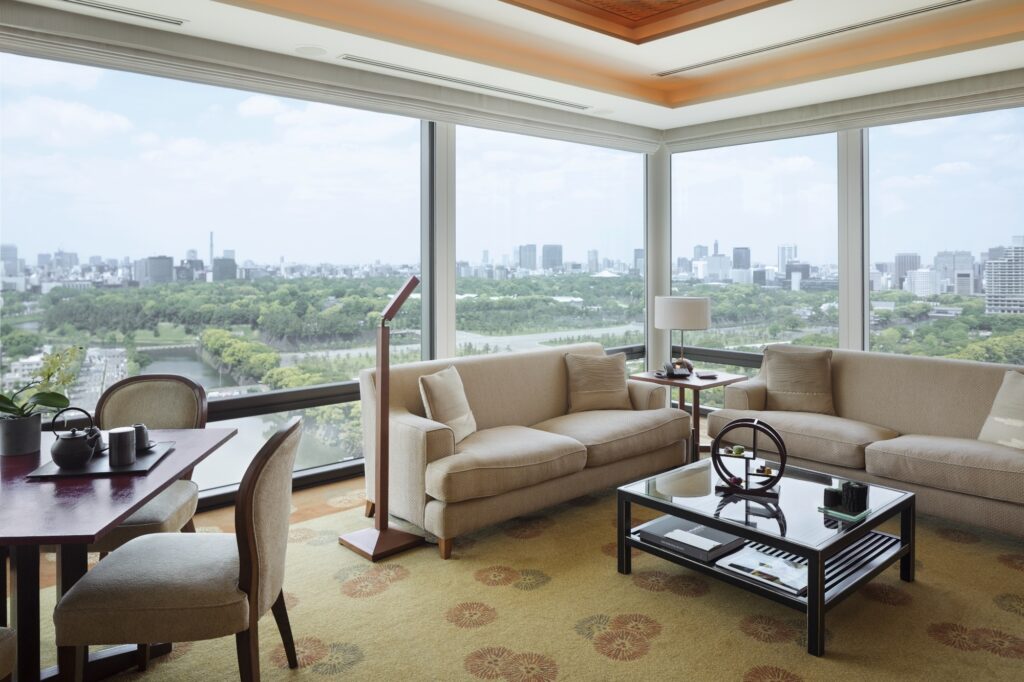
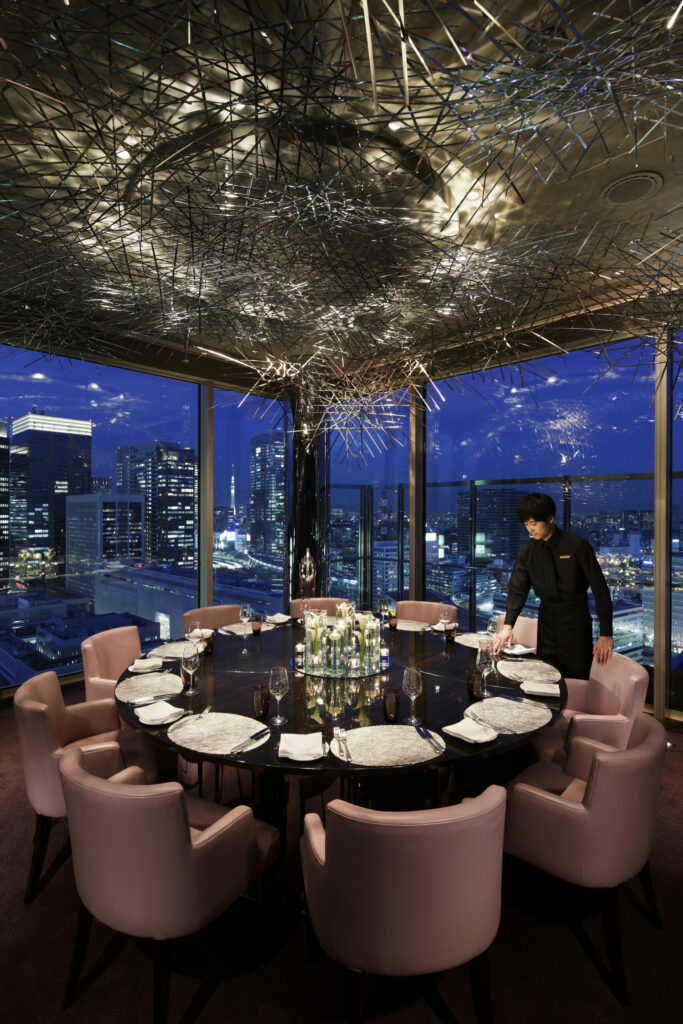
The Peninsula Tokyo has 3 restaurants, a bar and a boutique café. The Hei Fung Terrace is a traditional Cantonese restaurant with an interior design reminiscent of Suzhou’s classic gardens.
The Peter and Peter: The Bar, on the other hand, are very different, with a modern interior design and an electric atmosphere that has the panoramic views of the city as its main backdrop. At Peter: The Bar, the setting is all silver and purple, the impression of being under a virtual sakura canopy. In the restaurant, the menu is that of a steak-and-grill and one can taste dried Japanese entrecote, Kurobuta pork or scallops from Hokkaido. The bar welcomes the golden youth in search of delicious cocktails (beware, you must be at least 20 years old to order there).
The Lobby is spacious and grand, ideal for afternoon tea. Finally, the Peninsula Boutique & Café offers sweet treats made by pastry chef Pascal Cialdella.
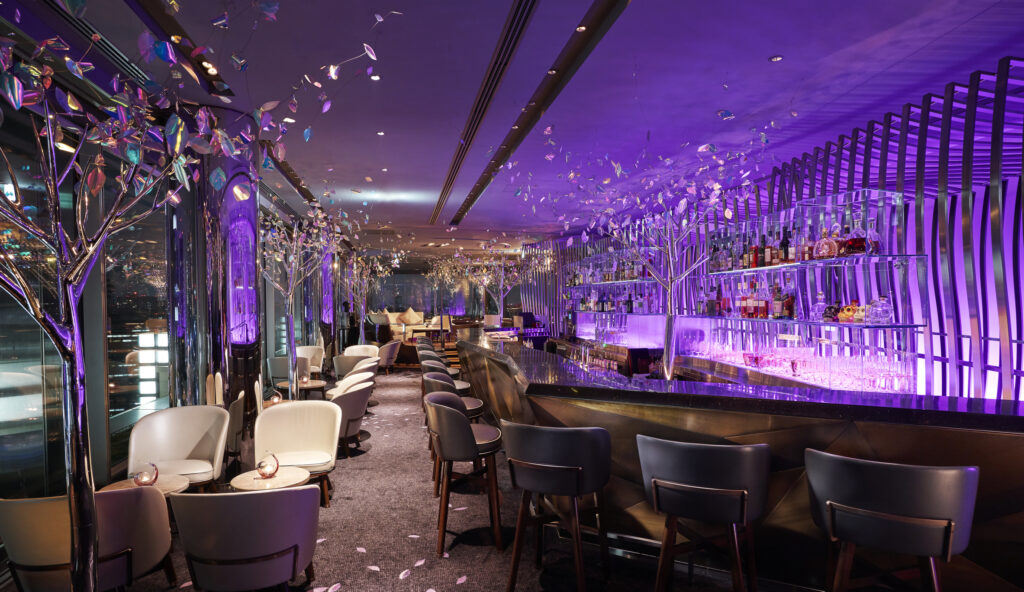
To complete the hotel’s offering, the Peninsula Spa is a haven of peace and quiet, with bespoke treatments, a 20-metre heated indoor pool and a state-of-the-art fitness center.
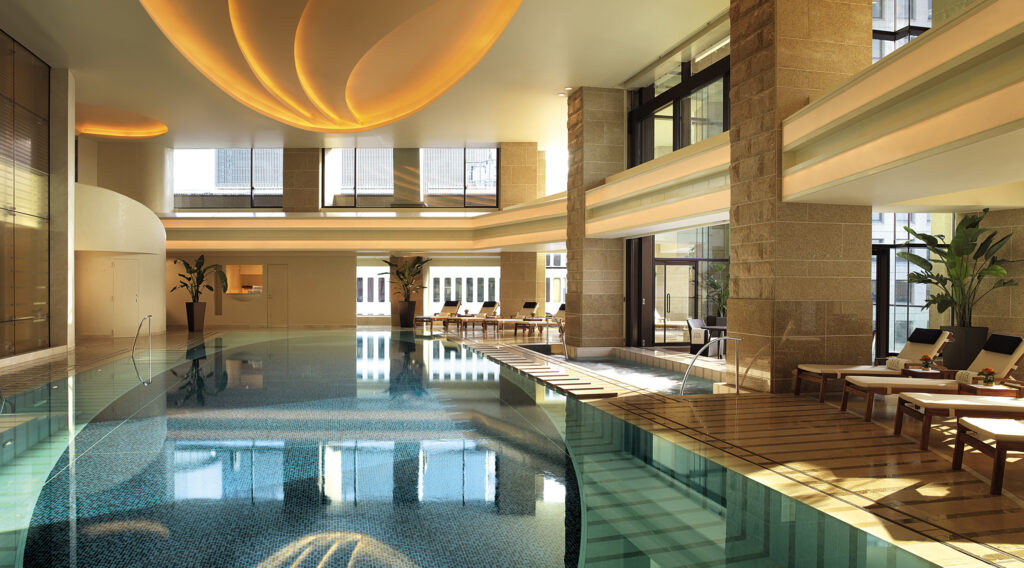
Address: 1-8-1 Yurakucho, Chiyoda-ku, Tokyo
Transfer: 20 minutes from Haneda Airport
Opening period: All year
The Park Hyatt Tokyo is a familiar sight, having been the setting for Sofia Coppola’s second film, Lost in Translation, starring Bill Murray and Scarlett Johansson. The hotel has an appealing, understated elegance and 90s charm.
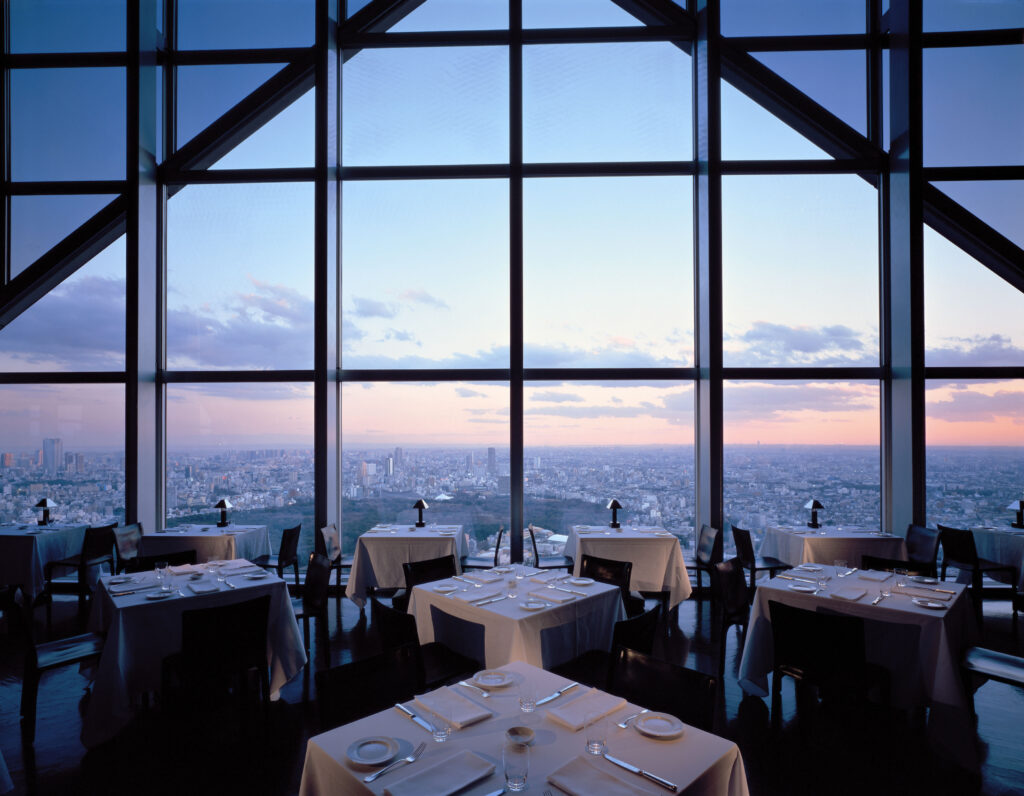
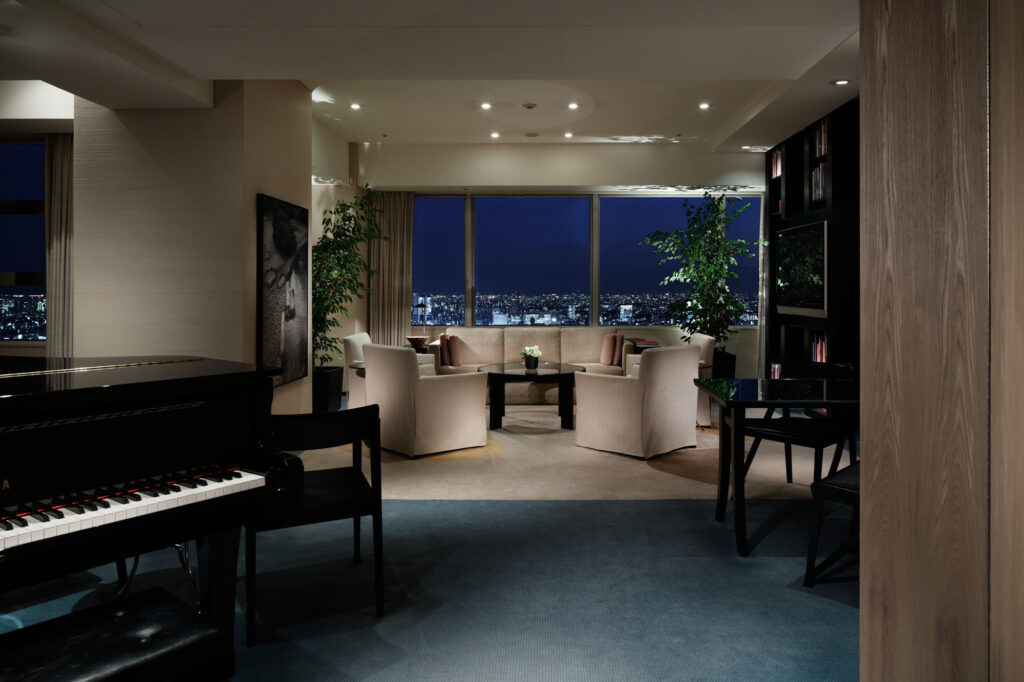
Stretching from the 39th to the 52nd floor of the Kenzo Tange-designed Shinjuku Park Tower, the Park Hyatt Tokyo offers 360-degree views of the city and a glimpse of the famous Mount Fuji in the distance. Inside, the hotel has a classic contemporary décor with many variations of wood. In its 177 rooms, there is a mid-century designed by John Morford with black, brown, grey or cream tones, and stunning views of the city.
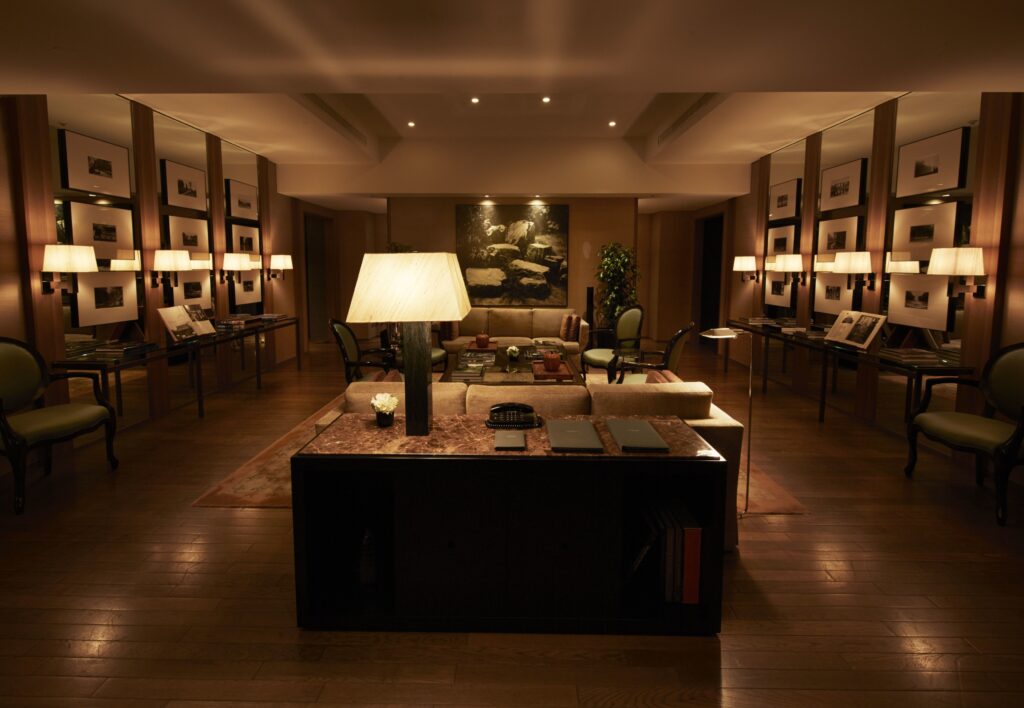
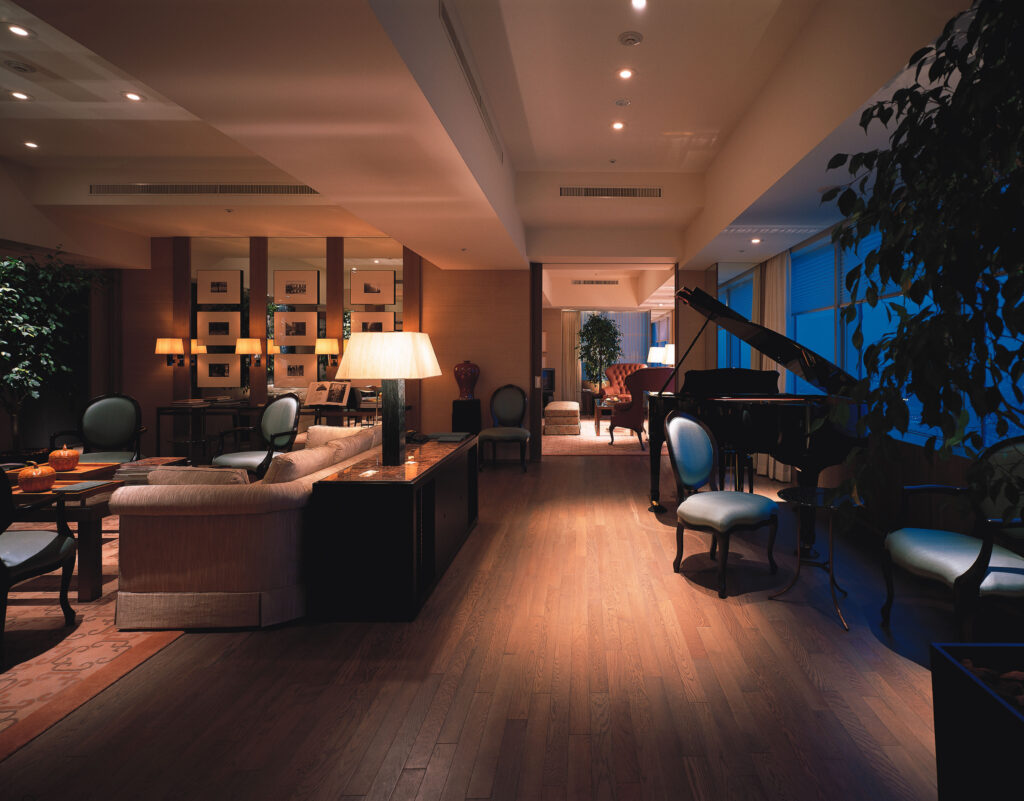
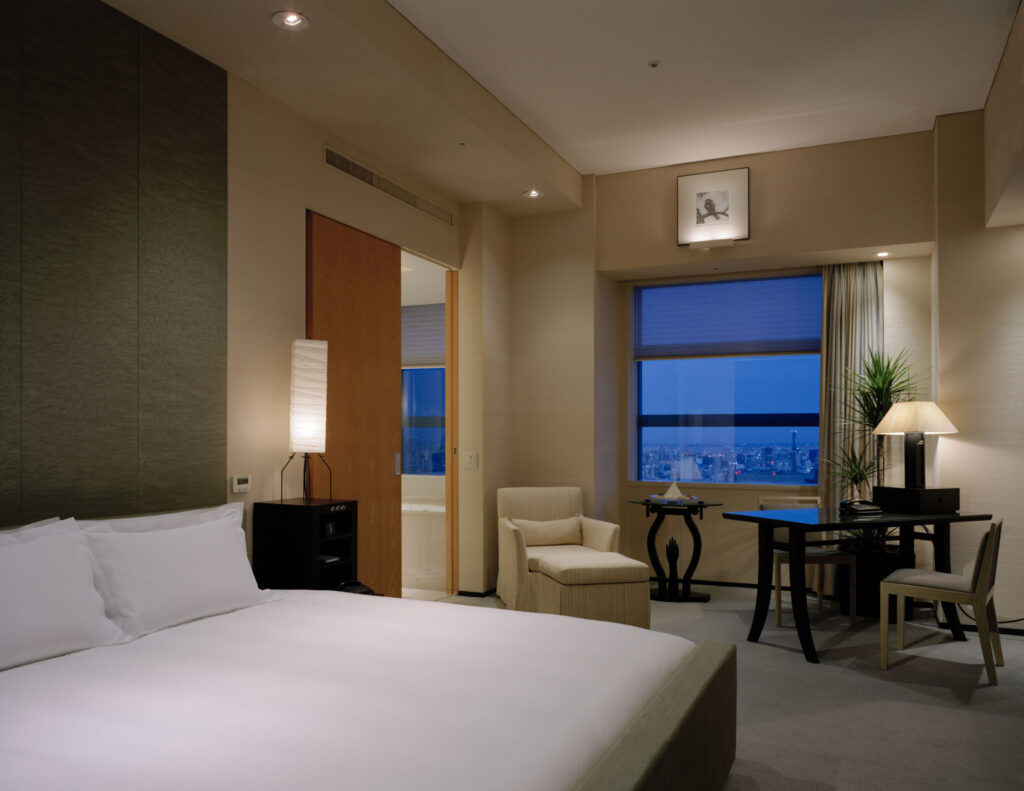
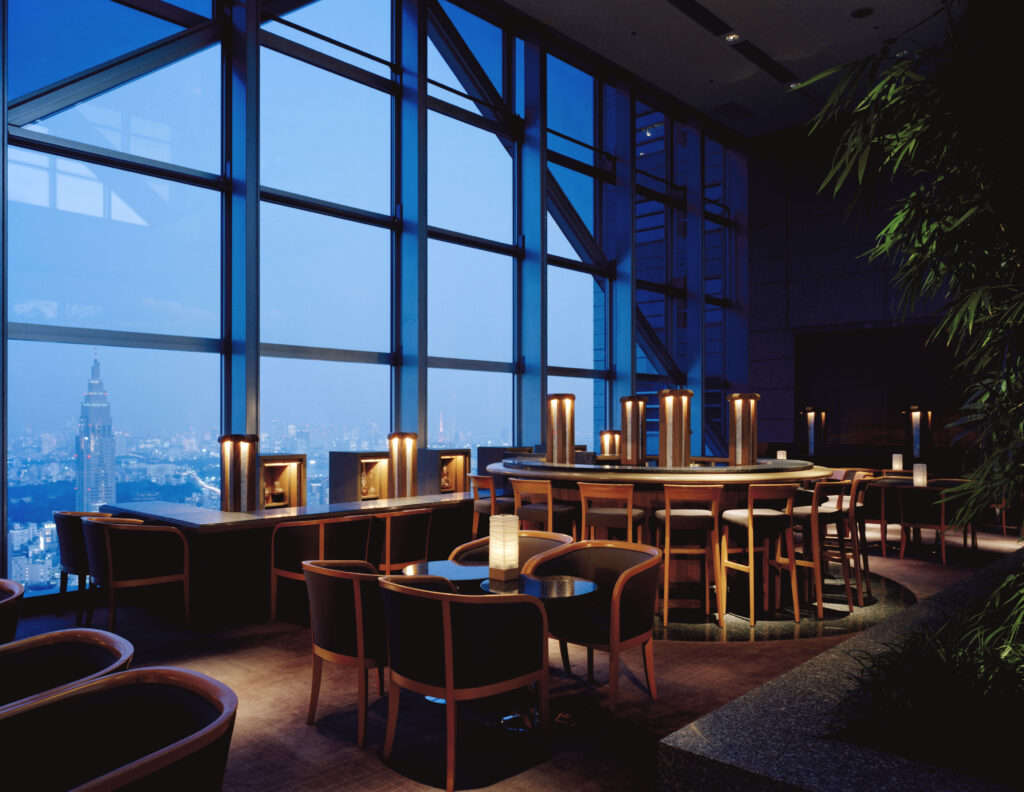
No less than eight outlets make up the Park Hyatt Tokyo’s F&B offering.
The iconic New York Grill and adjoining New York Bar top the list. A dark and jazzy interior on the 52nd floor of the hotel, with floor-to-ceiling windows offering stunning views of the city, to be enjoyed alongside American classics prepared by the head chef and his team.
Kozue is the hotel’s contemporary Japanese restaurant, offering a seasonal menu and views of Mount Fuji.
Girandole, with its old-fashioned décor of black-and-white photographs of European cafés, has something of the Belle Époque cruise liner reception room about it.
The Peak Lounge and attached Peak Bar is a well-lit bamboo garden, ideal for afternoon tea or evening cocktails.
Rounding out the hotel’s offerings, Park Hyatt Tokyo’s Club on the Park spa is a spacious and airy setting located on the 47th floor of the building. The spa offers access to private treatment rooms, whirlpools, cold-jet pools, dry and steam saunas, a 20-metre pool and an aerobics studio.
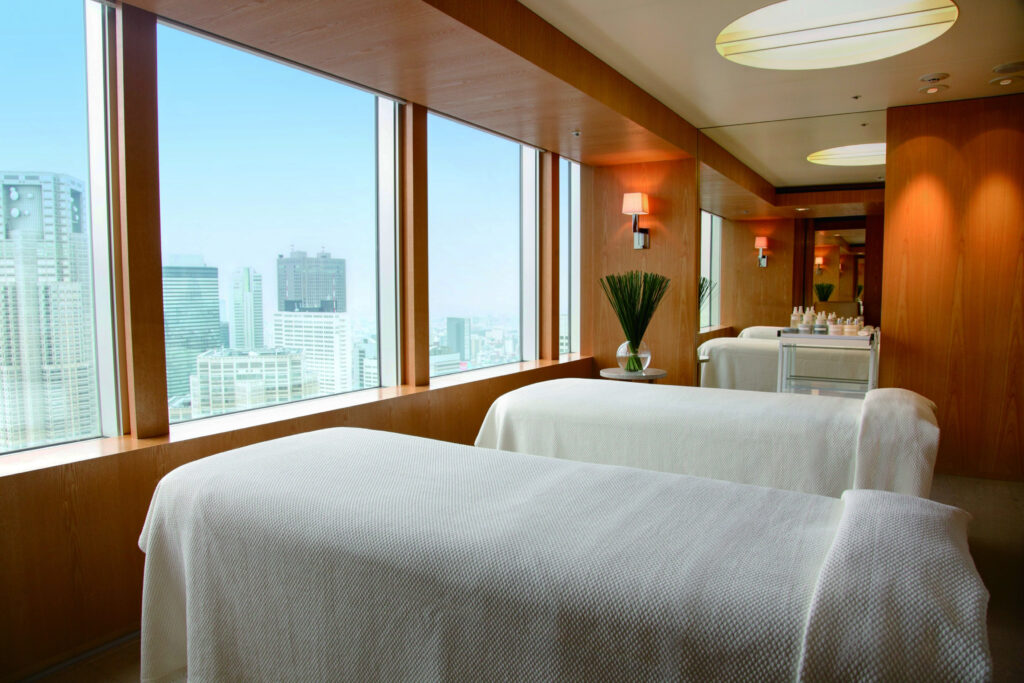
Address: 1-8-1 Yurakucho, Chiyoda-ku, Tokyo
Transfer: 25 minutes from Haneda Airport
Opening period: All year
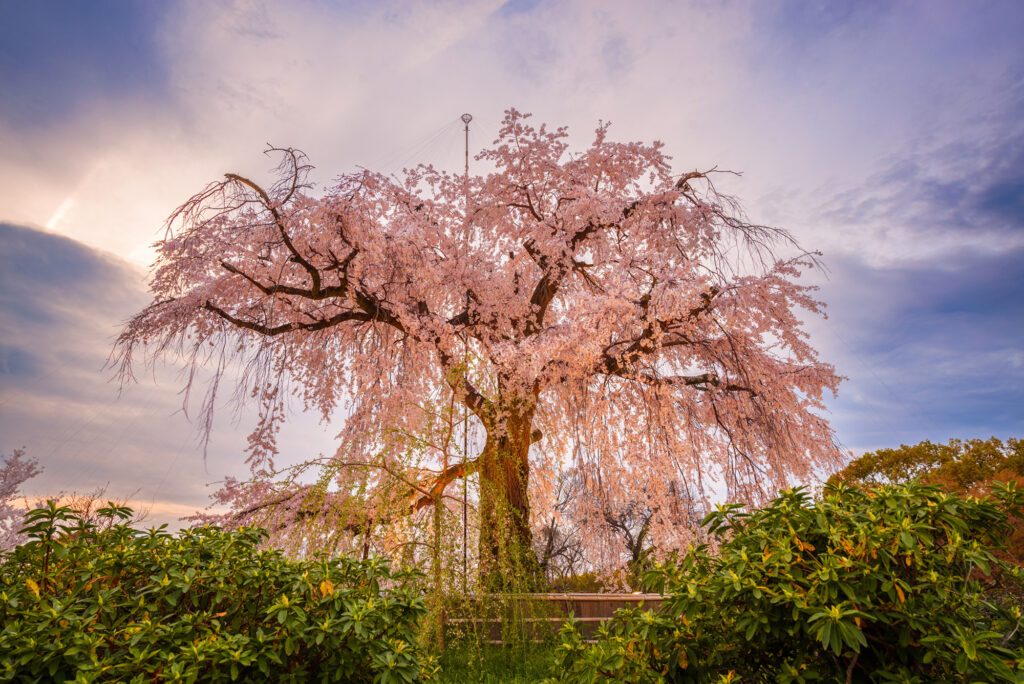
The park is a popular destination for hanami, the Japanese tradition of flower viewing, and is particularly lively at night, when the cherry blossoms are illuminated with colored lights.
Maruyama Koen Park also features several other attractions, including a large pond with a picturesque bridge, a teahouse, and a small zoo. The park’s central location in Kyoto, close to many other popular tourist destinations, makes it a convenient and enjoyable place to visit for locals and tourists alike.
Home to 60 different varieties of cherry trees, Hirano Shrine is one of Kyoto’s top hanami spots. The Shrine has existed since the year 794 and was established by Emperor Kammu, and it has been popular for its cherry blossoms almost just as long, with the event being annually celebrated since the year 985.
It is now the oldest regularly held festival in Kyoto.
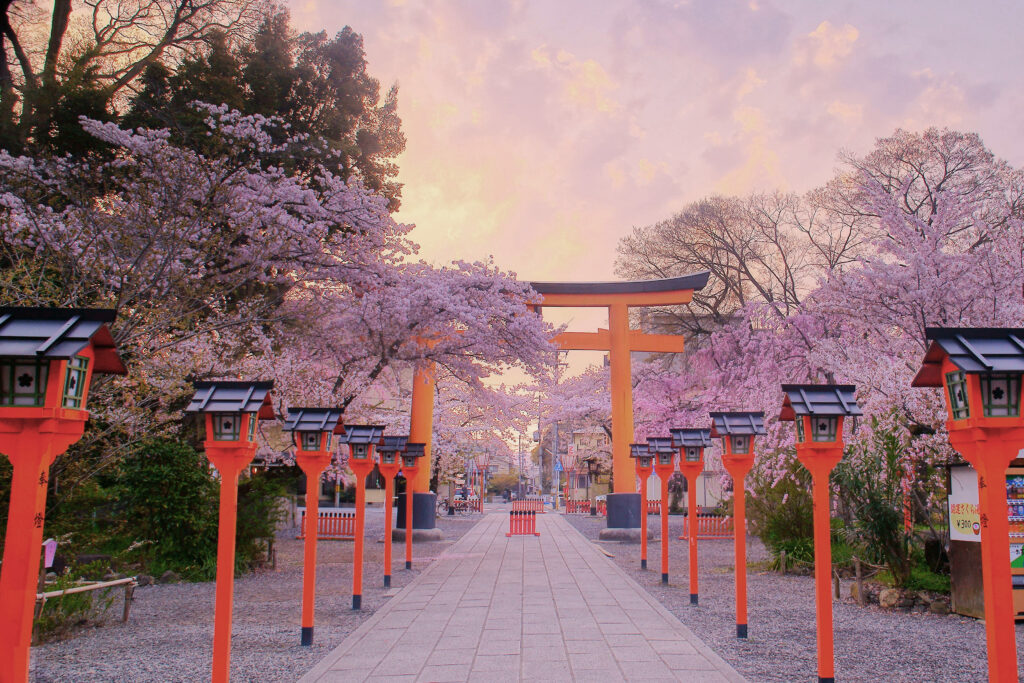
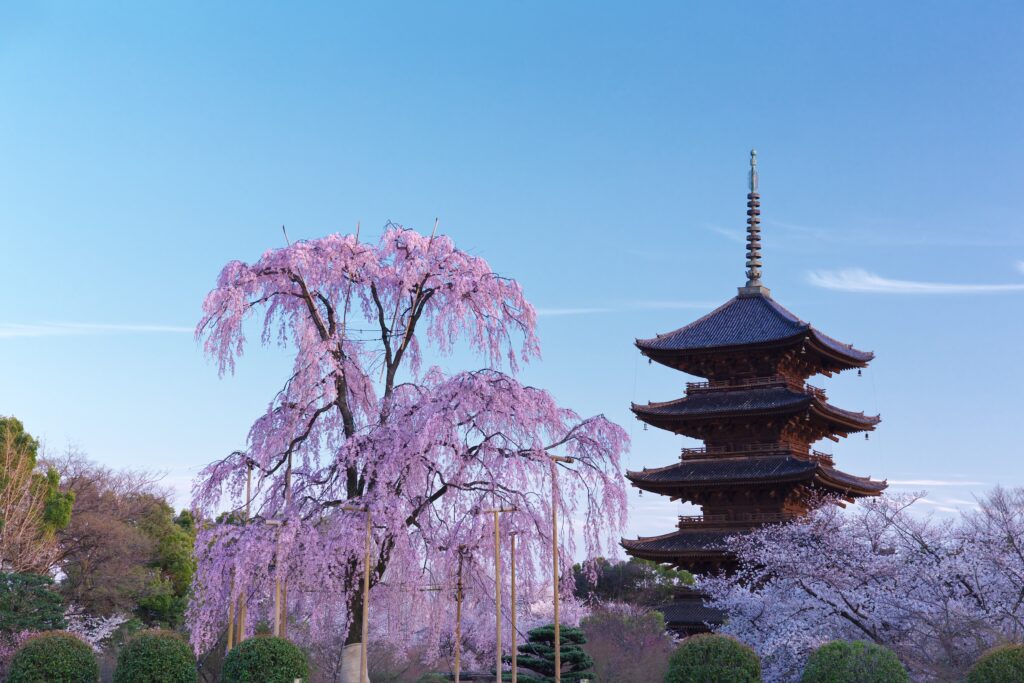
In addition to its five-storey pagoda, Toji Temple is famous for 200 Sakura trees and, most importantly, a 130-year-old shidare-zakura weeping cherry tree. A walk there during the day is very pleasant, but coming at dusk or in the evening is an incredible experience as the trees are lit up and glittering for a fairy-tale show.
Although a morning or evening walk through the gardens is very pleasant, we highly recommend going at dusk for the illuminations.
Less grand than the previous address but we would argue just as beautiful, if not more, the Philosopher’s Path is a pleasant stone pathway following a canal that is lined with hundreds of cherry trees. Visitors can walk underneath the trees for about 2 kilometers, starting at the Silver Pavilion and ending in the Nanzenji neighborhood.
The path is also lined with small cafes, shops, and restaurants as well as small temples and shrines.
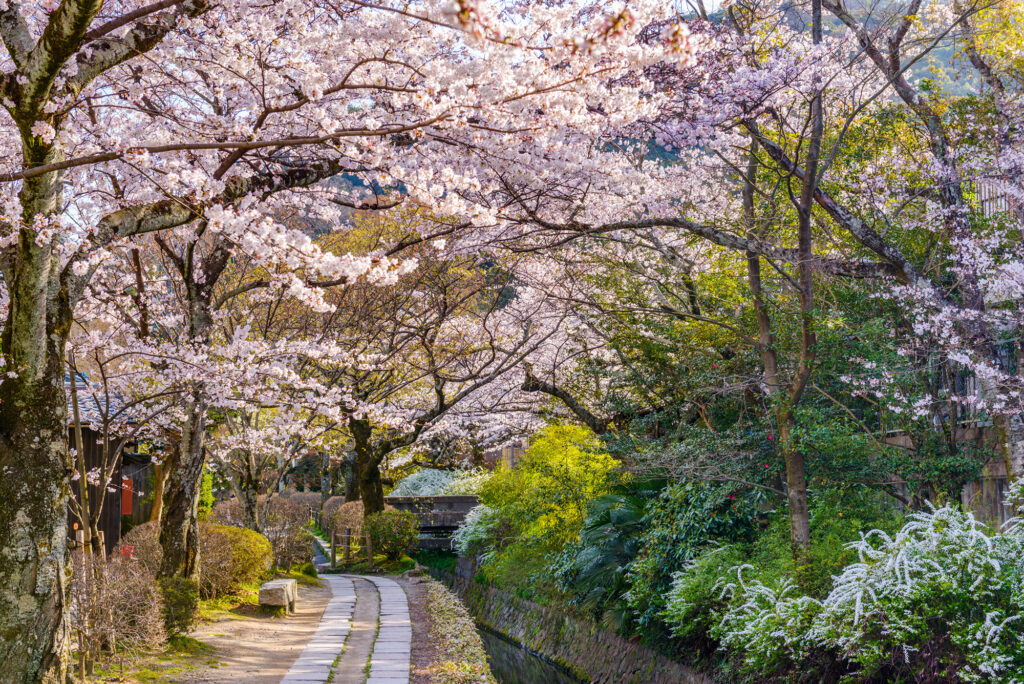
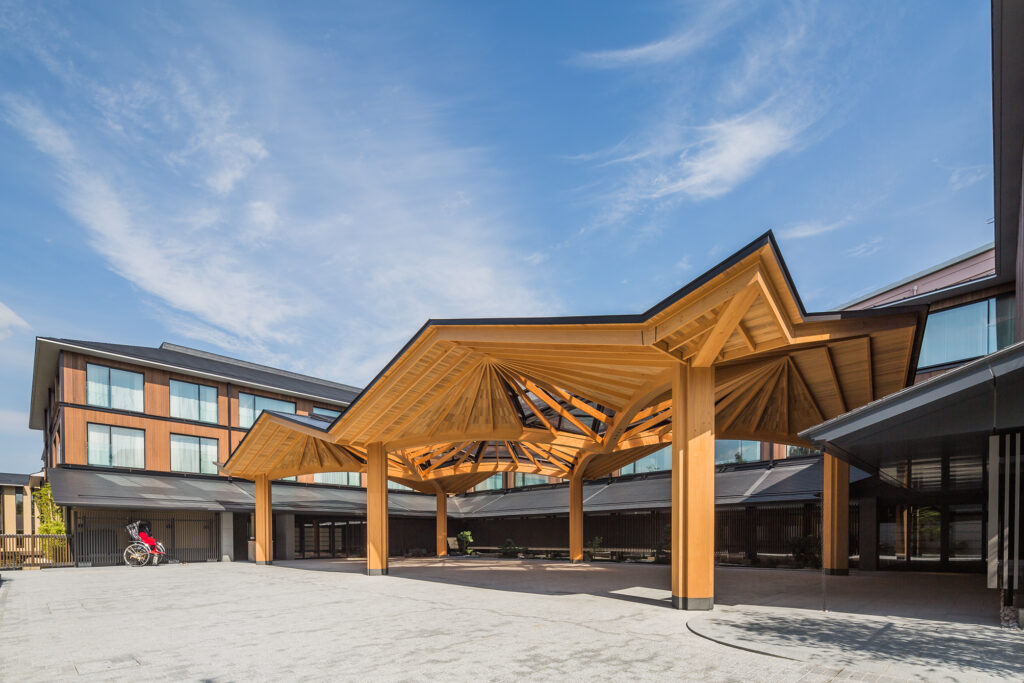
Inspired by Zen architecture, with the Shakusui-en, an 800-year-old pond at its center, the Four Seasons Hotel Tokyo embodies the Old-World charms of the cultural capital of Japan.
Surrounded by a landscape of cherry blossoms and rich greenery, The Four Seasons Hotel Kyoto is the perfect marriage of modern and traditional.
The building and its 123 guestrooms and suites the building maintains an intimate atmosphere by combining traditional Japanese elements such as flower displays, paper lanterns and fusuma screens, with more contemporary ones such a mid-century furniture, a full marble bathroom, and modern amenities.
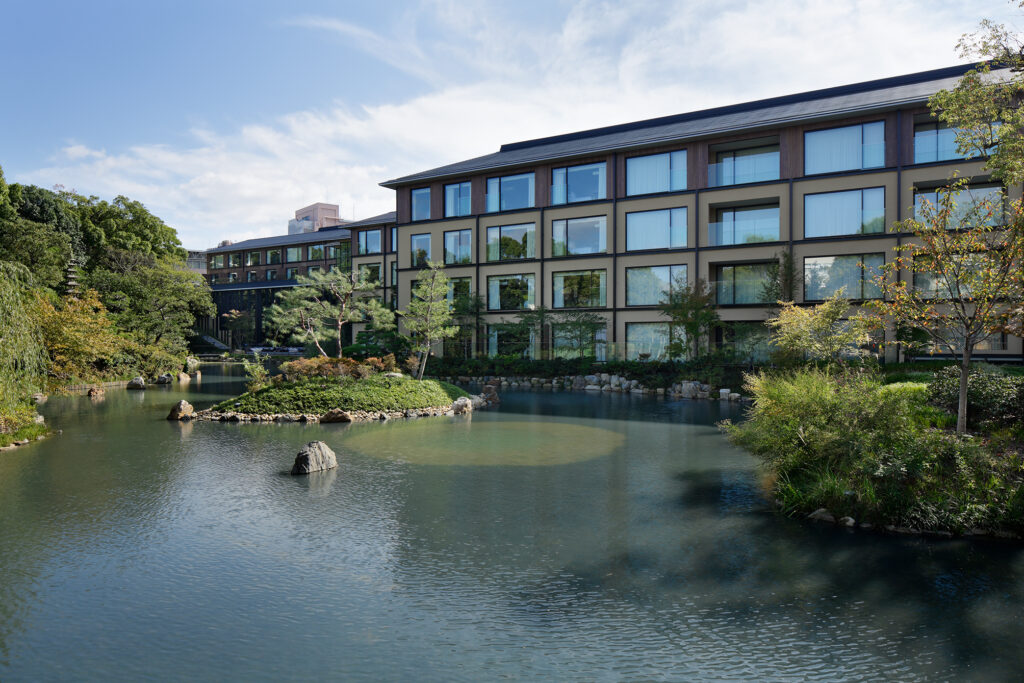
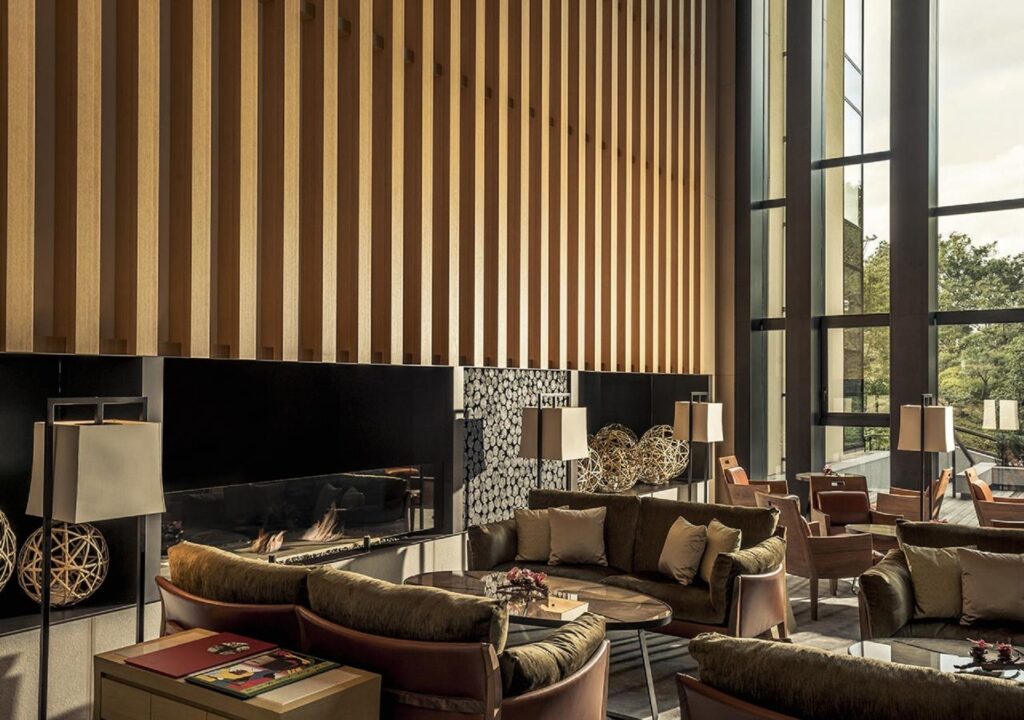
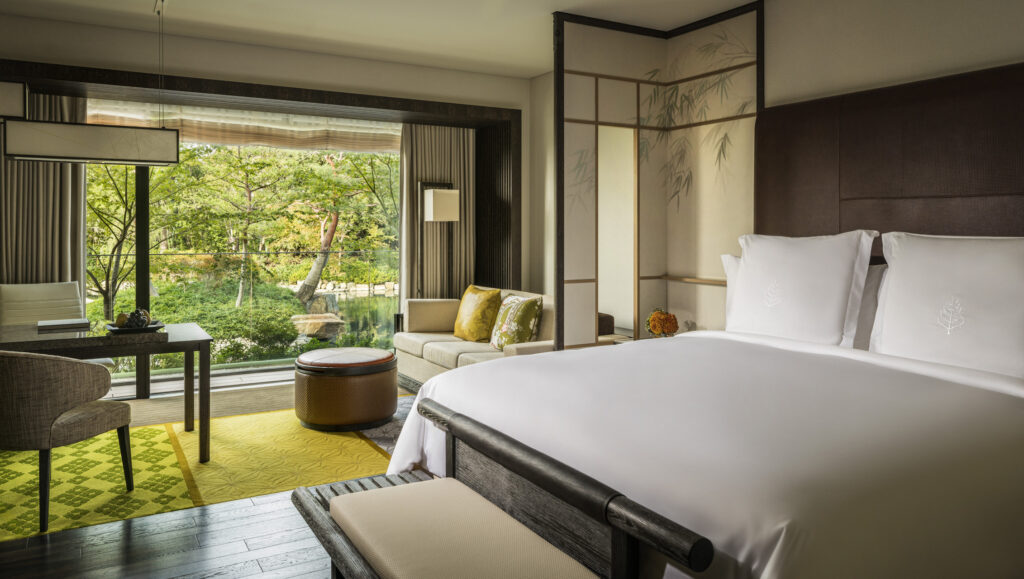
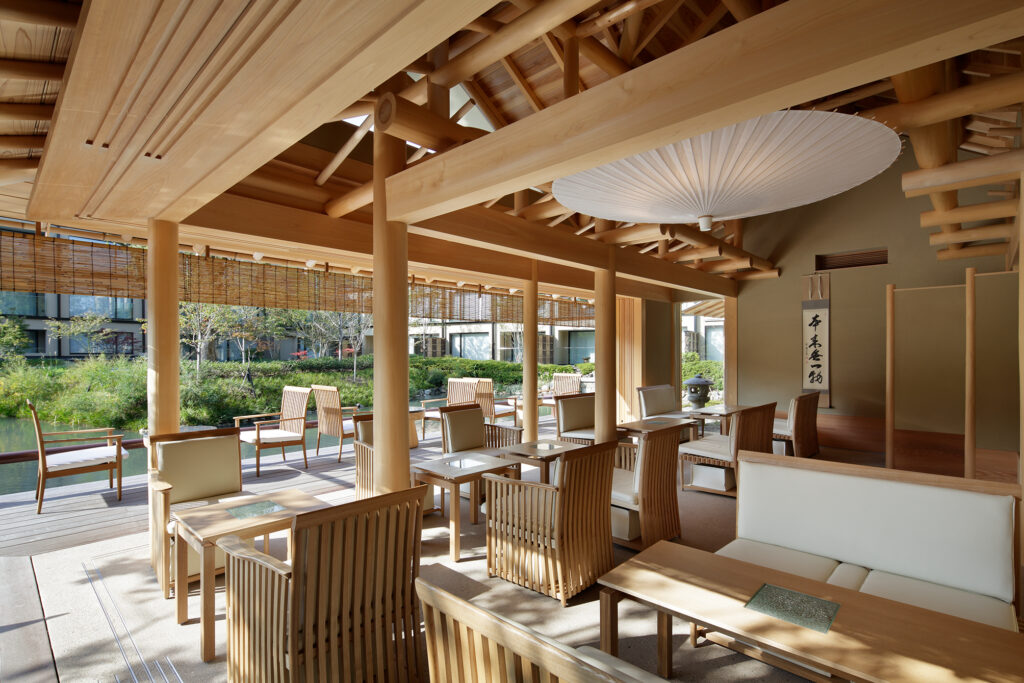
On the culinary side, guests have access to 4 restaurants and bars. The Brasserie invites guests for breakfast, lunch, afternoon tea, and dinner, within a modern and sleek décor that includes a fireplace and views over the pond garden.
With its golden and silver tones in a refined setting, Sushi Wakon has all the makings of a temple of tasting and offers a quiet and intimate place to enjoy sushi prepared with ingredients from Tokyo’s Toyosu market.
The FUJU offers a sublime traditional 12th century Japanese setting with its light wooden construction and paper lanterns, which seems to float on the pond. Enjoy Matcha tea or a glass of Kyoto sake.
The hotel’s spa is decorated in true Japanese style with wood, bamboo and stone. The spa invites guests to enjoy their massages and treatments in 7 treatments rooms, and provides access to a 20-meter indoor pool, a large whirlpool, a fully equipped fitness center.
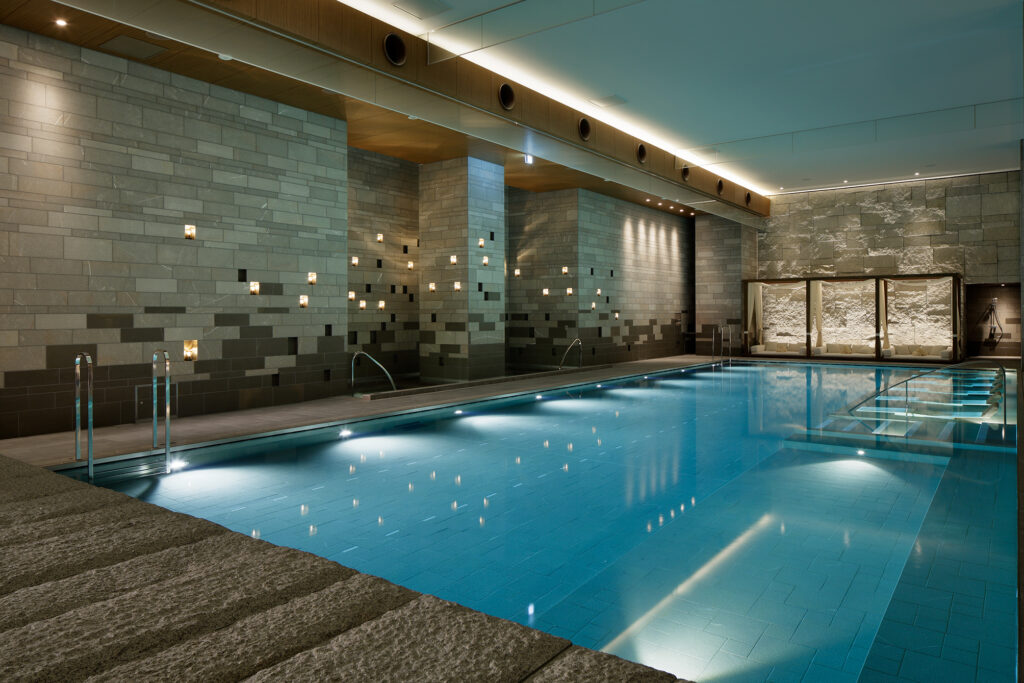
Address: 445-3, Myohoin Maekawa-cho, Higashiyama-ku,, Kyoto
Transfer: 45 minutes from Osaka International (Itami) Airport
Opening period: All year
Sitting at the heart of a secret garden surrounded by 32 acres of forest land, in the north-west of Kyoto, Aman Kyoto is a tribute to the spirit of the ancient capital of Japan.
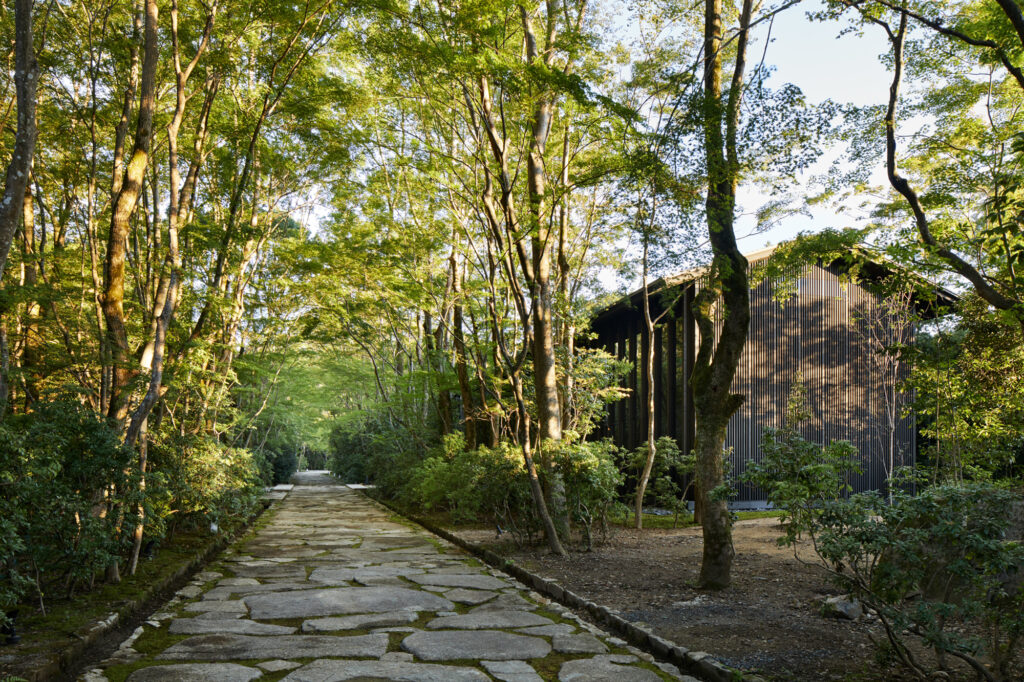
The Aman Kyoto, an architectural masterpiece created by Kerry Hill Architects based in Singapore, is intimately connected to the cultural and historical traditions of the city. Situated amidst significant local landmarks like the Kinkakuji or Golden Pavilion Temple and the Kyoto Imperial Palace, the hotel primarily employs wood and stone, lending its interior a modern, stripped-down look that takes full advantage of the surrounding natural beauty. The hotel’s design ethos emphasizes a connection to the outdoors, with every part of the building – be it the Living Pavilion Restaurant, the spa’s onsen bathing pools, or the 26 suites with their muted color scheme – offering glimpses of the verdant surroundings.
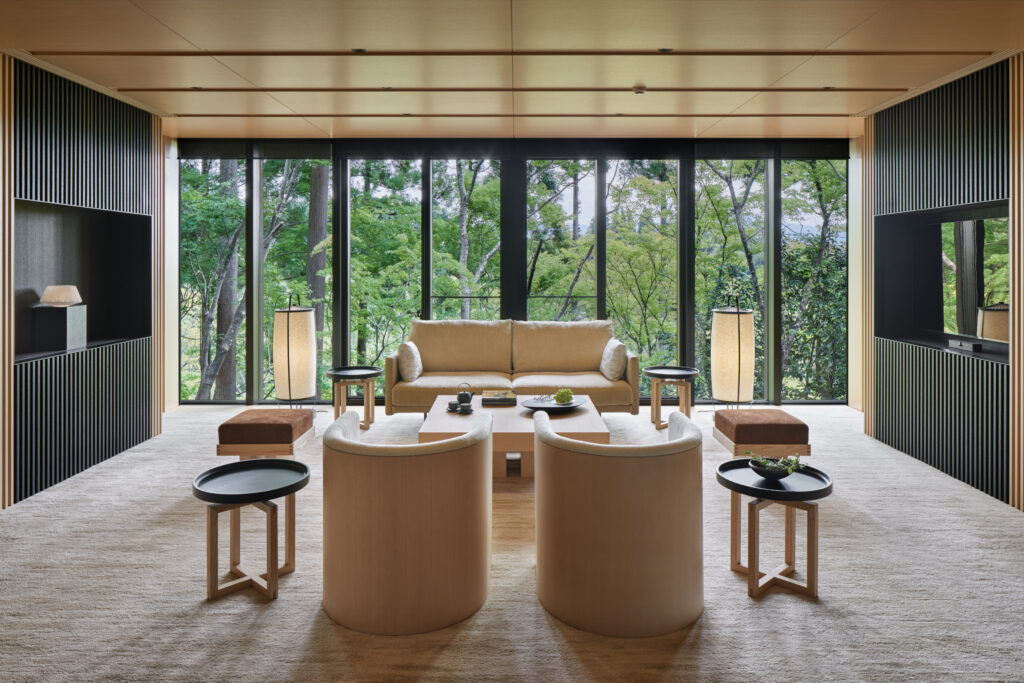
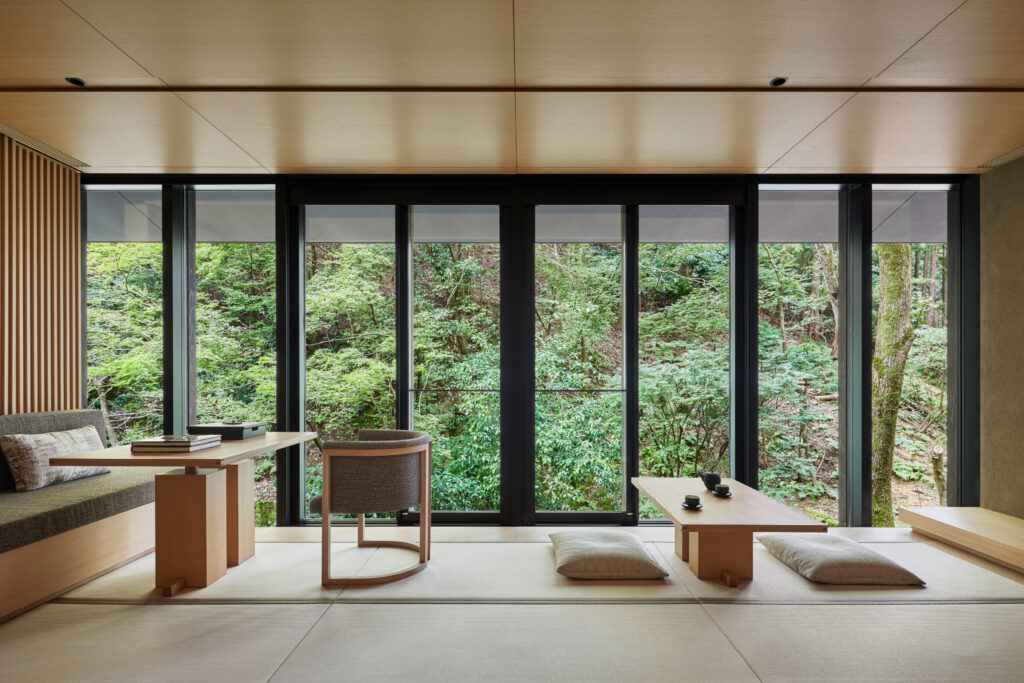
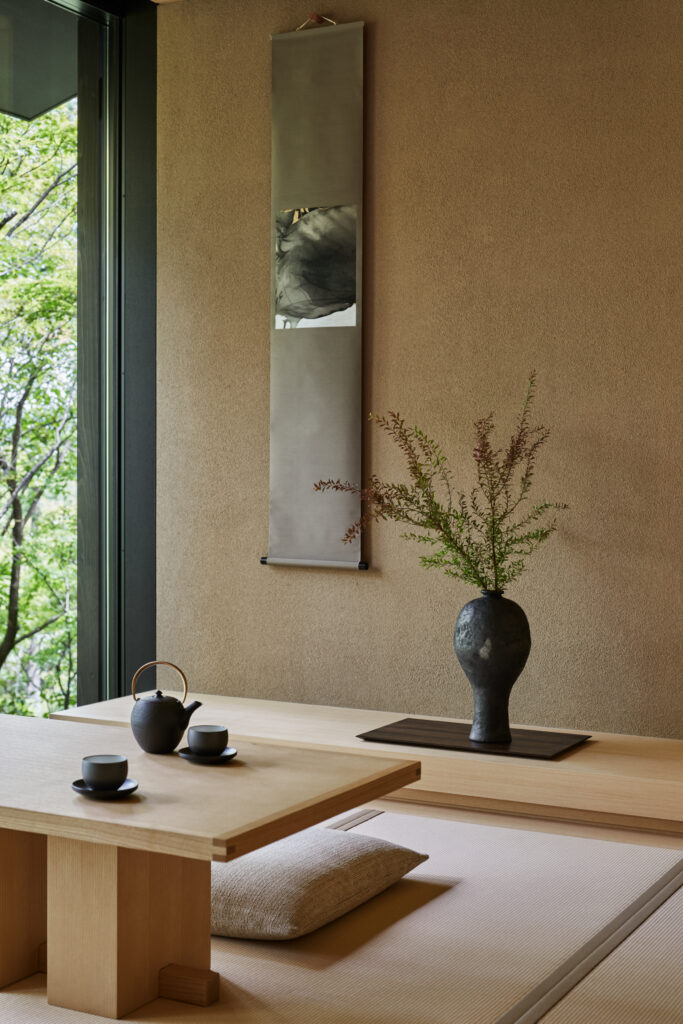
The visual motifs are repeated in the culinary area of the hotel, featuring similar furniture but with a darker color palette.
Within the industrial décor of The Living Pavilion, guests are able to enjoy the authentic home-cooked Kyoto-style cuisine alongside an array of Italian and Latin recipes as well. Meanwhile, Taka-An’s darker, more intimate setting makes way for a much more authentic Japanese Omakase experience designed by Executive Chef Shinichiro Takagi, Michelin-starred chef of Zeniya Restaurant.
Omakase is a Japanese sentence that literally means “I’ll leave it up to you”, commonly used when dining in Japanese restaurant where the client let the chef surprise him.
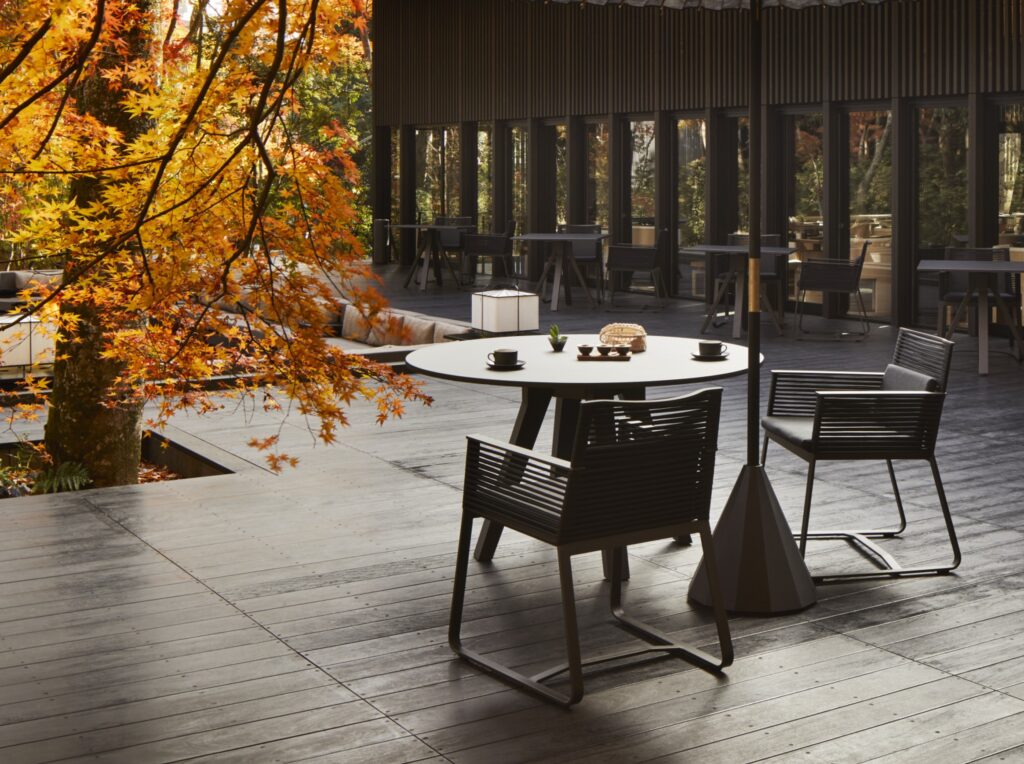
Aman Kyoto is also home to a traditional Japanese Afternoon Tea served in the al fresco area of The Living Pavilion where guests can sample over 20 kinds of tea, alongside sweet and Savory treats.
At the spa, Aman Kyoto offers Shiatsu massages, treatments and a half-day wellness program designed for guests who wish to live in harmony with nature. Aman Spa uses its own line of skin care and anti-stress products. Guests can also enjoy its onsen (hot spring pool), whose water is enhanced with herbs and fragrances.
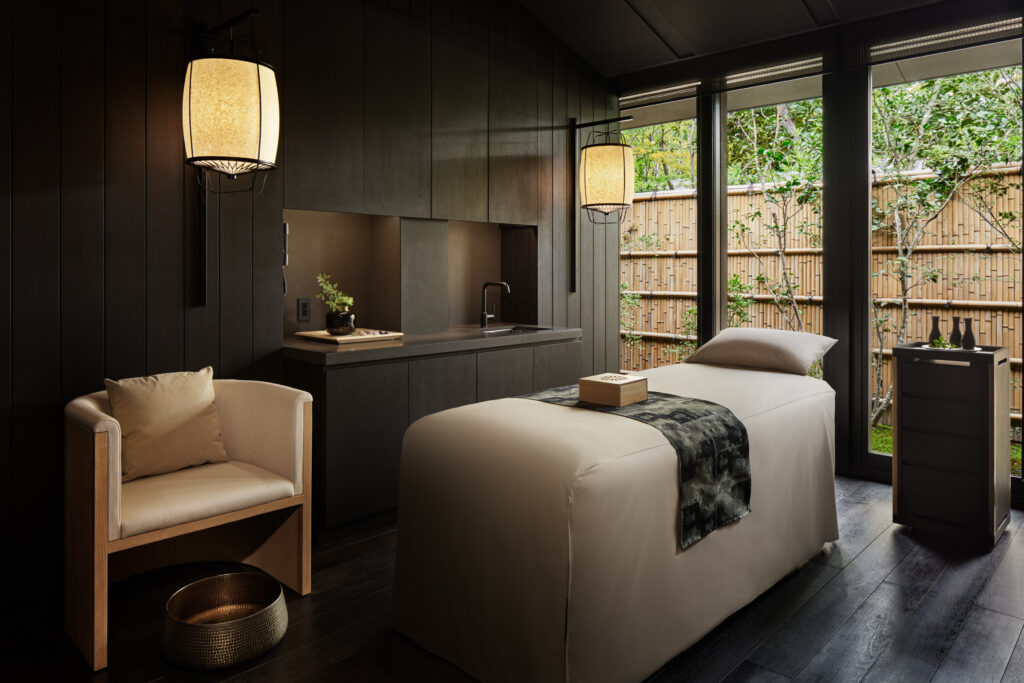
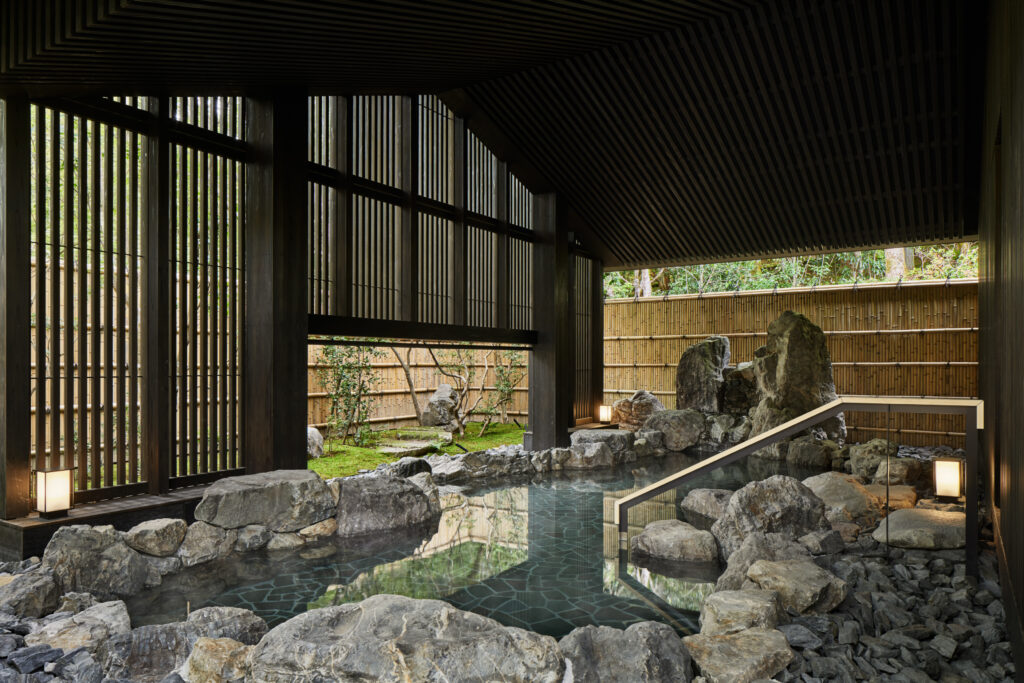
Address: 1 Okitayama Washimine-Cho, Kita-ku, Kyoto
Transfer: Just under an hour from Osaka International (Itami) Airport
Opening period: All year
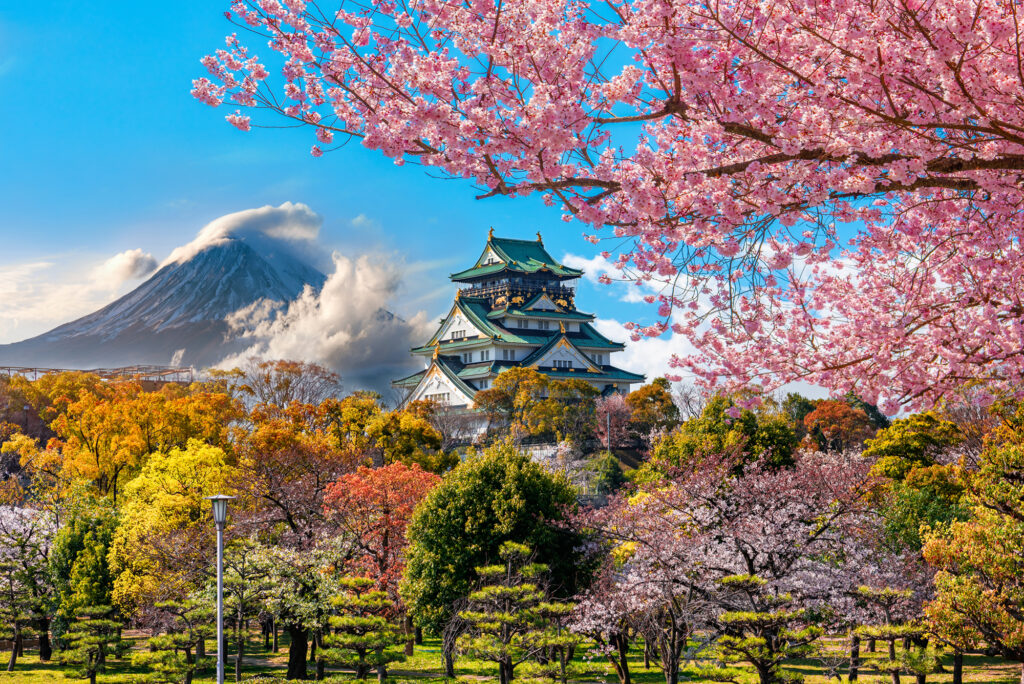
One most iconic addresses in Japan, Osaka Castle and the surrounding Nishinomaru Garden are located right at the heart of Osaka city. The castle, the largest of its time when it was completed in 1597, was the ruling epicenter of unified Japan.
The property covers approximately 15 acres and contains within its boundaries a number of cultural assets such as the Ote-mon Gate and the Kinmeisui Well. The Nishinomaru Garden is home to around 600 cherry trees. The spot is famous among locals who gather in the garden each year for the Sakura viewing.
Located some 30 kilometers north of the city center, the Commemorative Park had hosted the Japan World Exposition in 1970. The Expo had been the first one in Asia and had welcomed more than 75 pavilions to display the wonders of the country and the world.
Today, underneath the gaze of the 70-meter Tower of the Sun, the Park is ideal for nature walks, hanami, and museum visits. The park is also home to over 5000 cherry trees, making it one of Osaka’s most popular Sakura viewing spots.
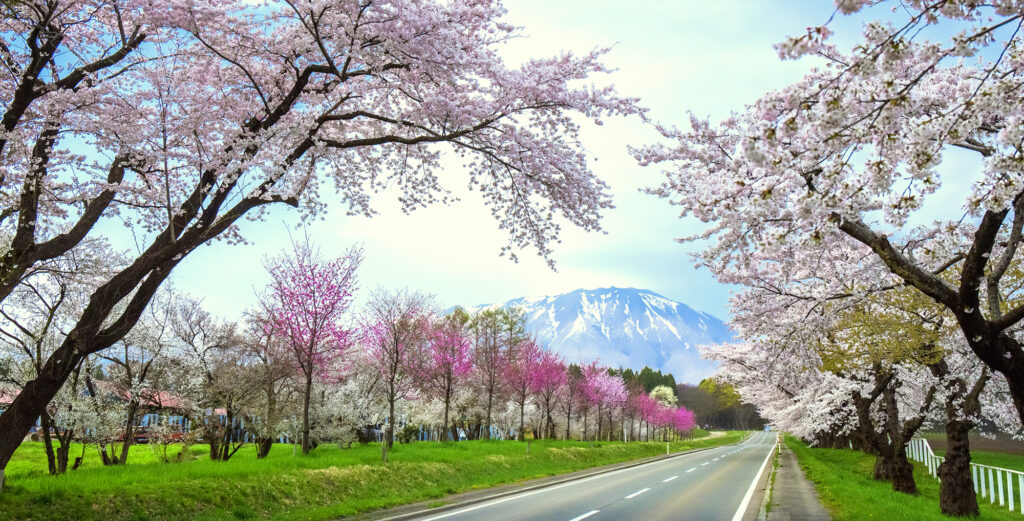
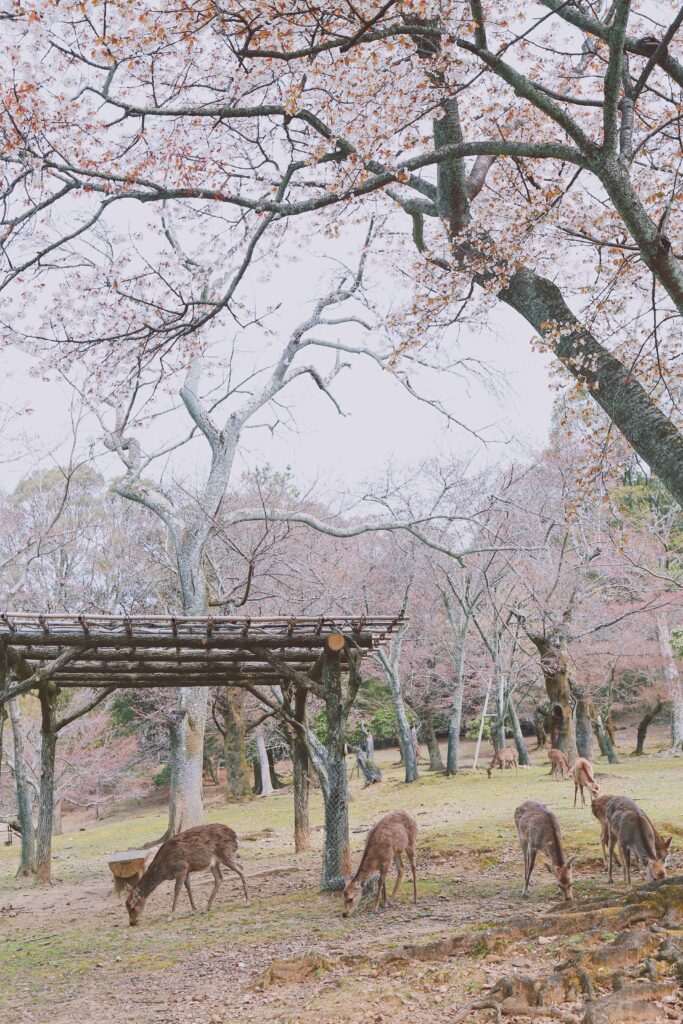
Located just 40 minutes by car outside of Osaka, Nara Park couples cherry blossom viewing with the magical sight of free roaming wild deer. Established in 1880, Nara Park is home to many iconic landmarks of the Nara Prefecture, such as the Todaiji, the Kofukuji, and the Nara National Museum.
Located along the Mido-suji, the main street that is often considered as the Champs Elysées of Osaka, The St. Regis Osaka is surrounded by an array of iconic landmarks, including the Universal Studios Japan, the Osaka Aquarium Kaiyukan, and is just 10 minutes by car from the Osaka Castle.
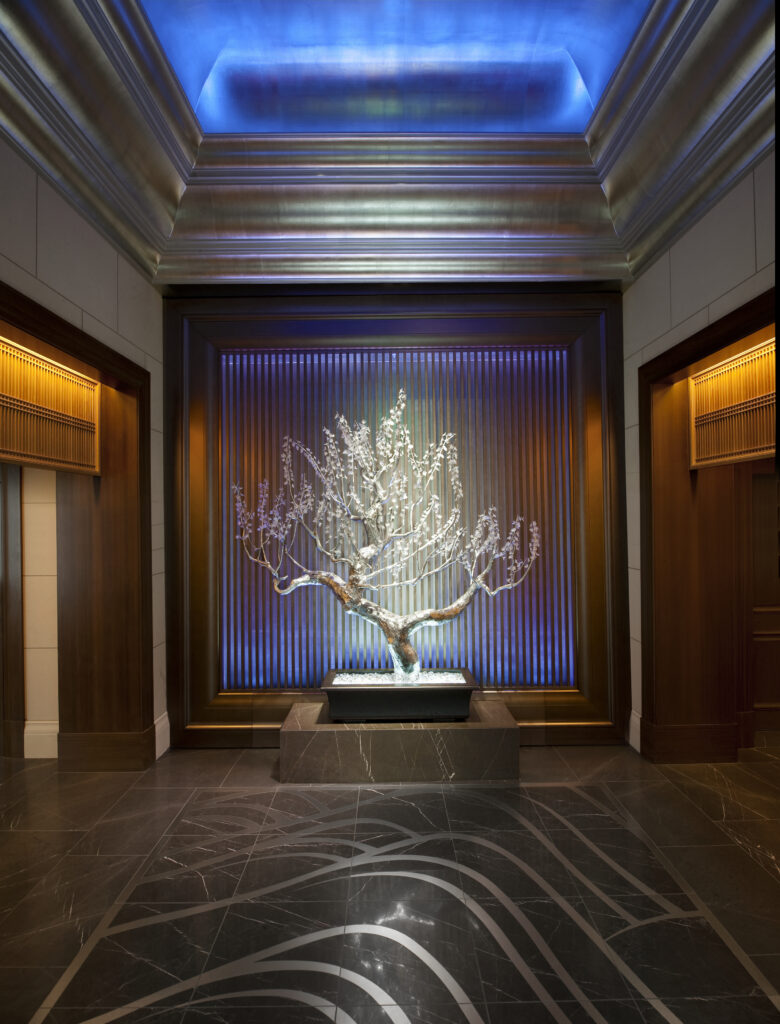
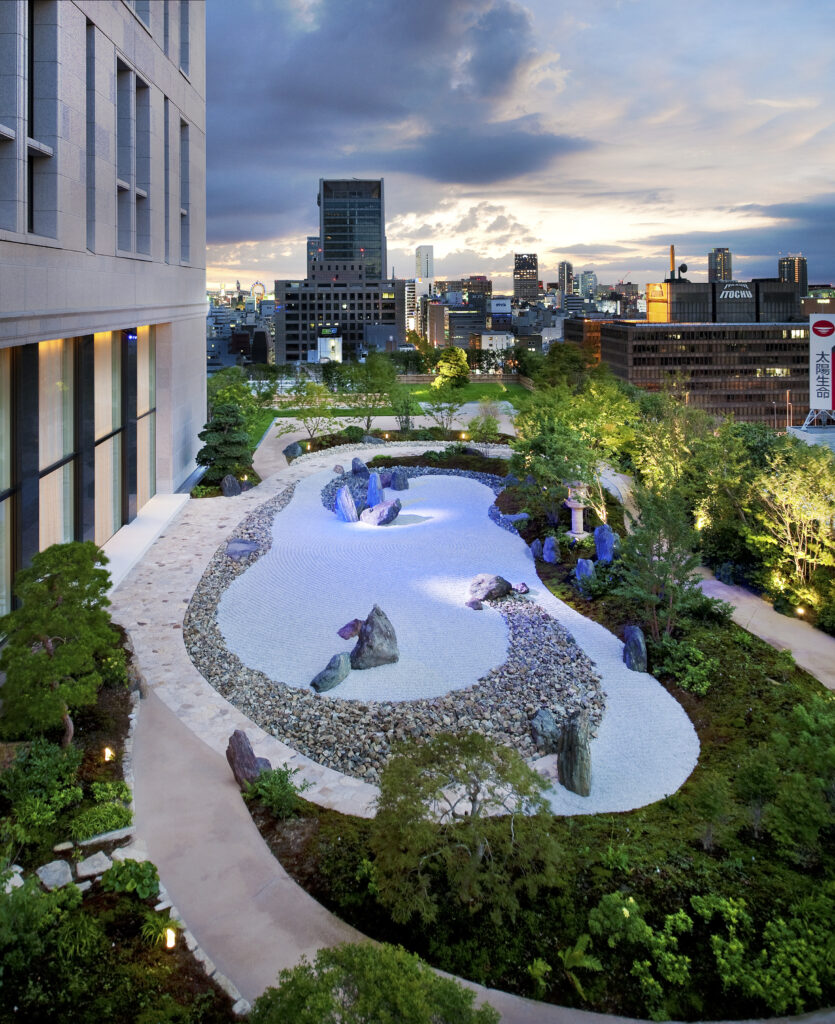
While the St. Regis Osaka is a Western-style address, it also pays homage to Japanese culture, whether in its public areas or in its 160 rooms or through its Zen garden. In the hotel’s rooms and suites, guests will find a residential atmosphere with floral wallpaper, contemporary furnishings, art deco lighting and stunning views of the city through floor-to-ceiling windows.
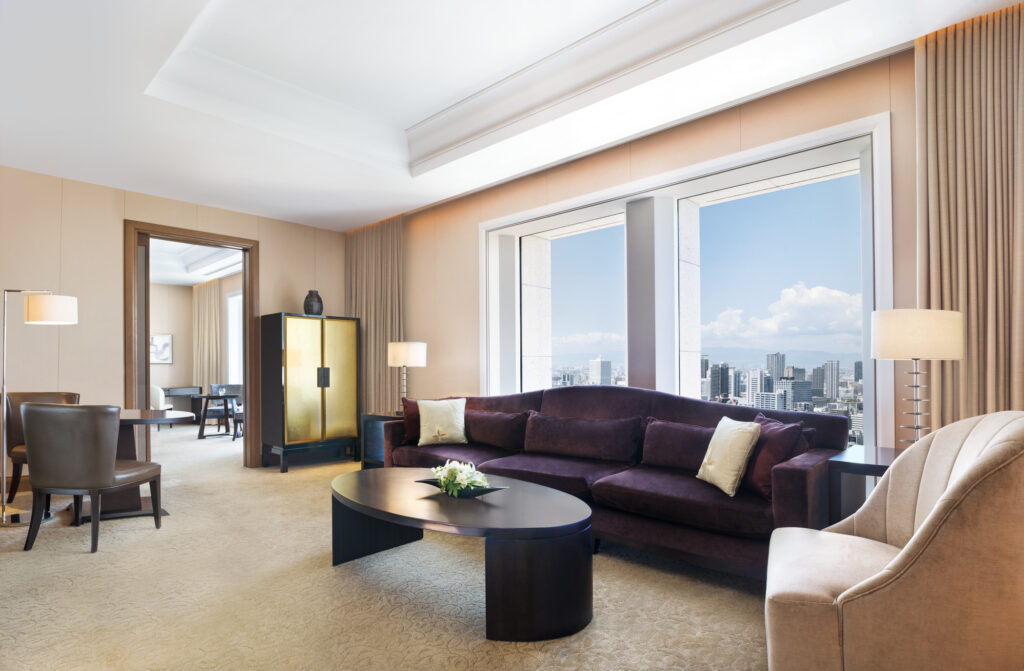
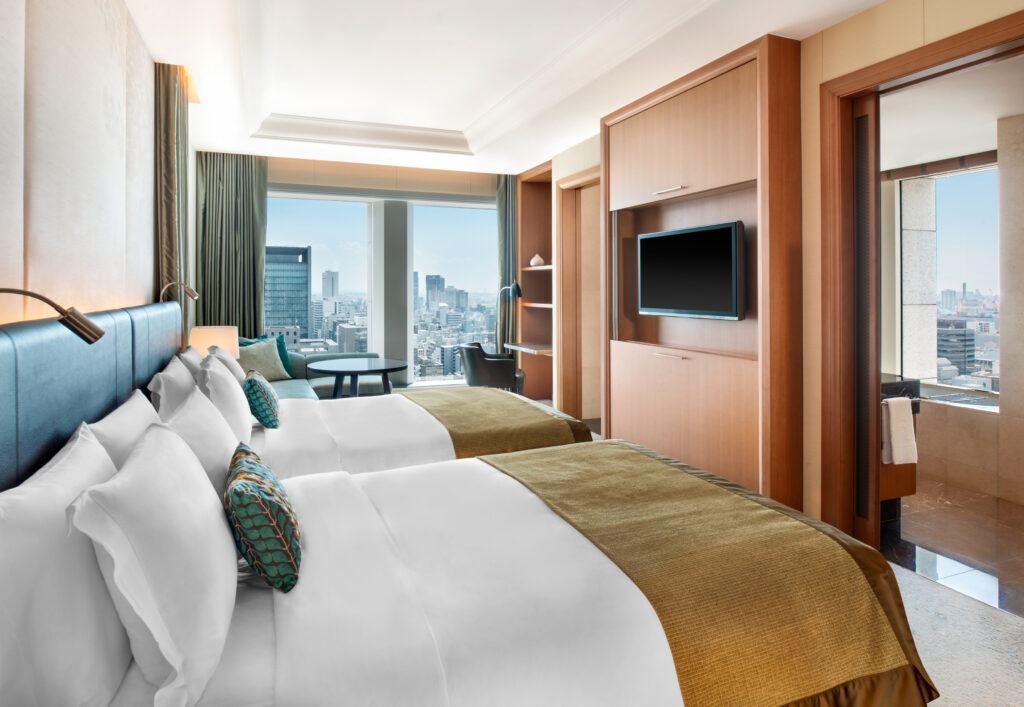
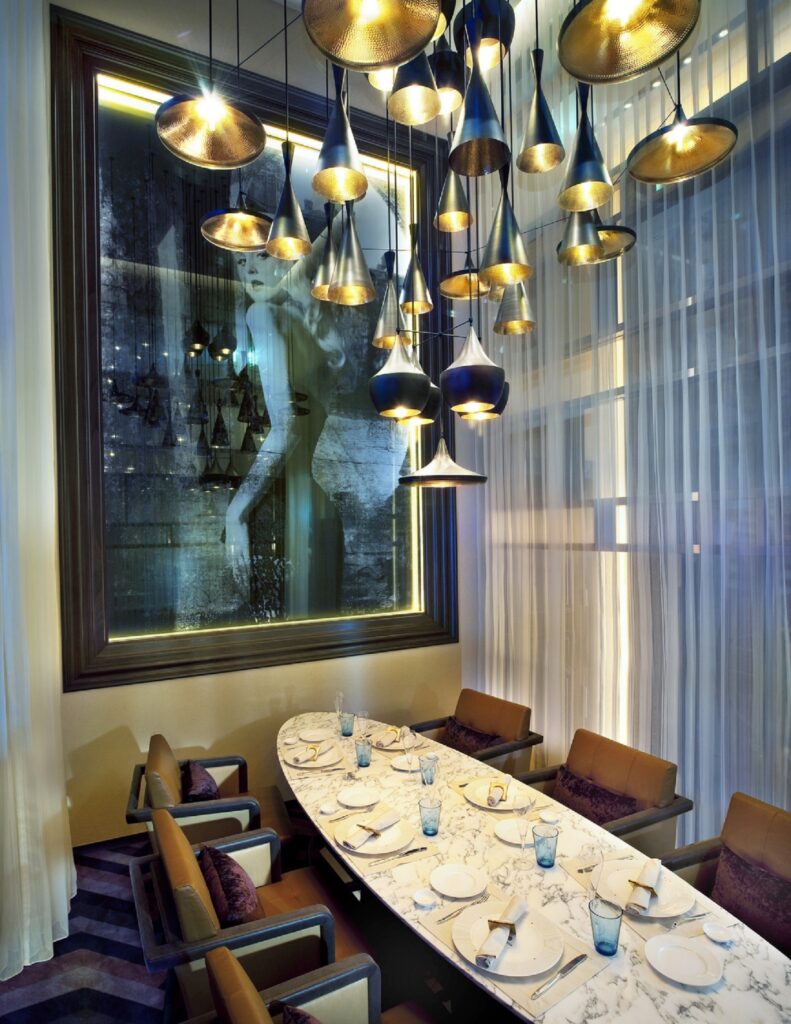
On the culinary front, the St. Regis Osaka offers 6 restaurants and bars.
The headliner is the Italian restaurant La Veduta with its creamy-apricot hue. Guests can sit under the baroque-inspired chandeliers and enjoy a menu that pays homage to Northern Italy. As for the French restaurant Rue d’Or and its chic brasserie decor, it brings the flavours and atmosphere of a French bistro to Osaka. The Teppanyaki Wajo, in its solemn black and white setting, is shaped like an Azuchi-Momoyama era tea house where tea ceremonies were performed, and allows guests to watch the chef prepare their dishes up close.
The St. Regis Bar’s lavish blue and gold décor is ideal for afternoon tea or evening cocktails.
Finally, the hotel even offers the immersive and interactive Petit Chef experience, turning the table into a playground for exploration.
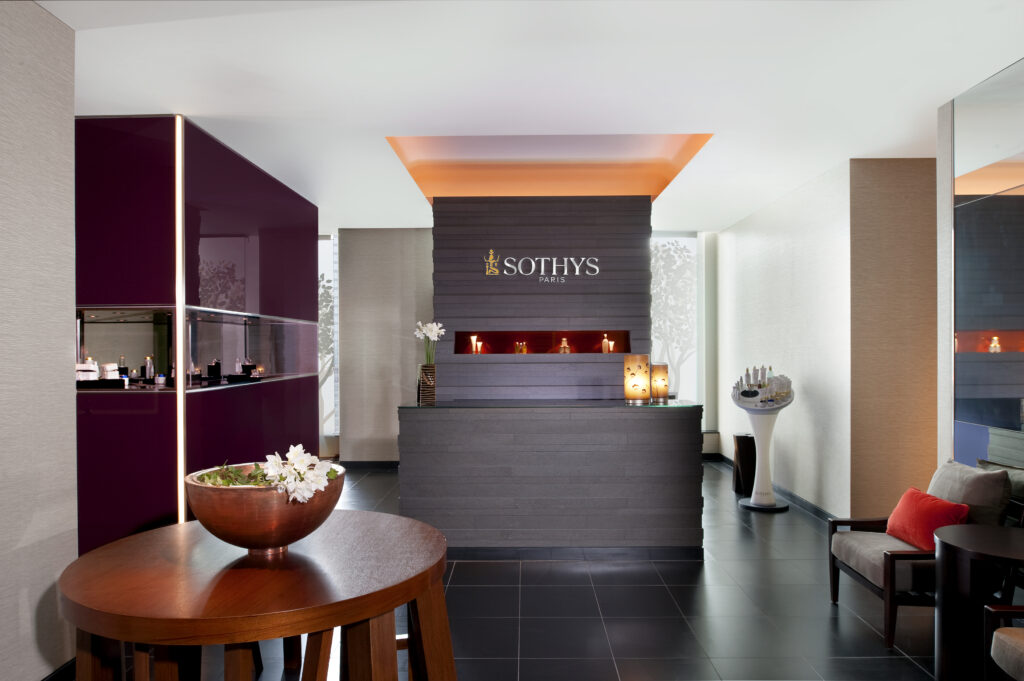
The St. Regis Osaka boasts a collaboration with the IRIDIUM featuring SOTHYS spa, a 355-square-meter area located on the 14th floor of the building dedicated to wellness and relaxation treatments, with exclusive products from the famous SOTHYS brand in a Japanese style, dedicated to wellness and relaxation treatments with exclusive SOTHYS brand products. Guests also have access to a fully equipped fitness center.
Address: 3-6-12 Hommachi Chu-ku, Osaka
Transfer: 20 minutes from Osaka International (Itami) Airport
Opening period: All year
Want to catch the famous Sakura season? Discover our collection of luxury hotels in Japan. Get in contact with our team for more information or if you have a question about a booking.